Alla scoperta delle Bocche di Cattaro
30 agosto 2025
- ENGLISH VERSION BELOW -
Le Bocche di Cattaro, patrimonio UNESCO dal 1979, sono una serie di insenature costituite da ampi valloni fra loro collegati che si inseriscono nell'entroterra come fiordi e i cui profondi bacini perfettamente riparati dal mare aperto, costituiscono uno dei migliori porti naturali del Mar Mediterraneo.
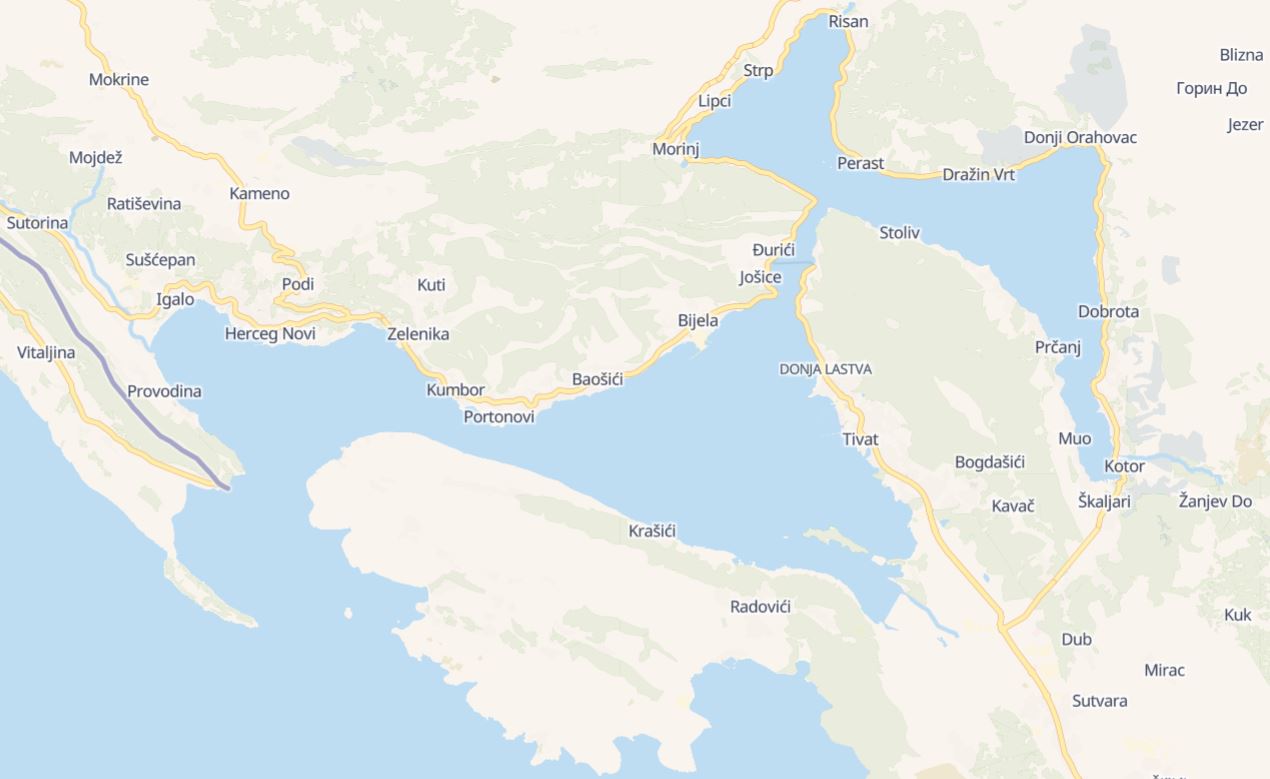
Map data from OpenStreetMap
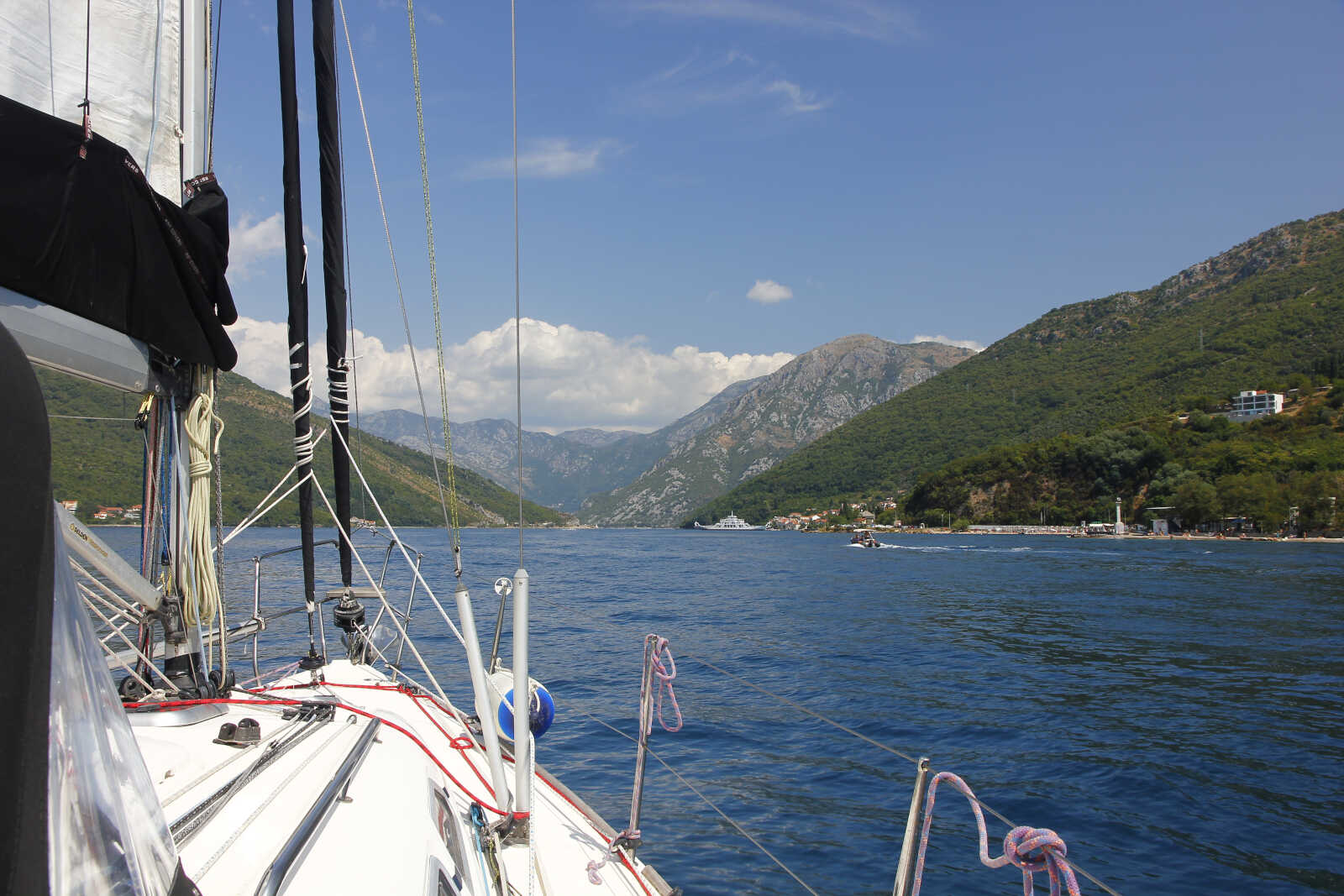
L'imboccatura dello stretto che collega i due bacini principali.
Dopo Herceg Novi abbiamo deciso di andare in un angolo più tranquillo delle Bocche di Cattaro: le isolette di Sveti Marko e Ostrvo cvijeća.
Su Sveti Marko c'è stato dagli Sessanta al 1991 un villaggio turistico di Club Med ora completamente abbandonato, dalla riva i resti degli edifici si intravedono appena sotto la folta vegetazione, mentre sull'isolotto di fronte c'è un convento a cui è vietato l'accesso.
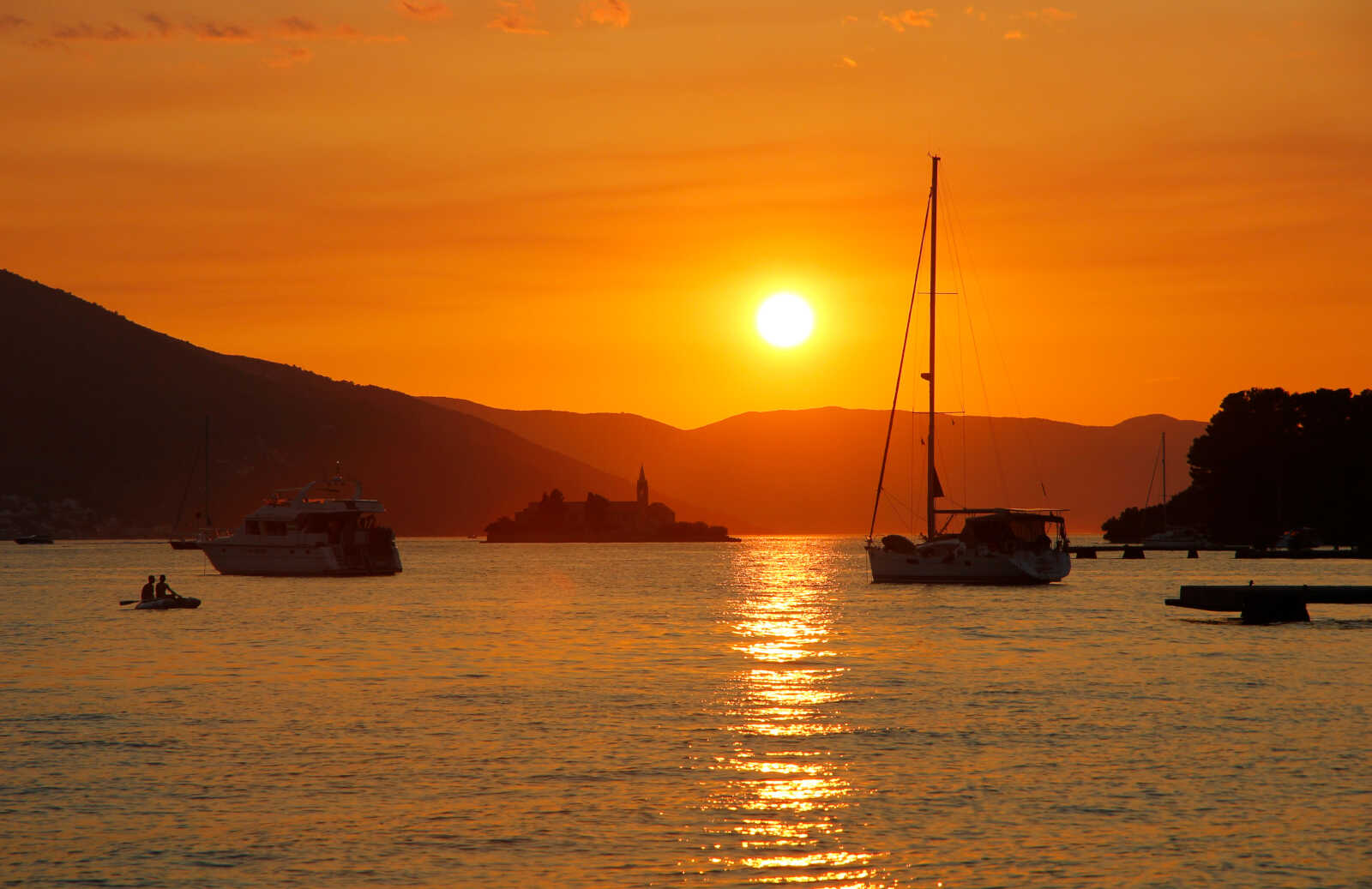
Ostrvo cvijeća, l'Isola dei Fiori, era invece un villaggio turistico per il personale militare della Jugoslavia socialista, e ospita dal XIII secolo un Monastero ortodosso dedicato a San Michele Arcangelo. Annesso all'isola c'è anche un piccolo porto e un pontile gestito da Marko con cui abbiamo fatto una chiacchierata mentre ci faceva gentilmente riempire gratis le nostre taniche d'acqua.
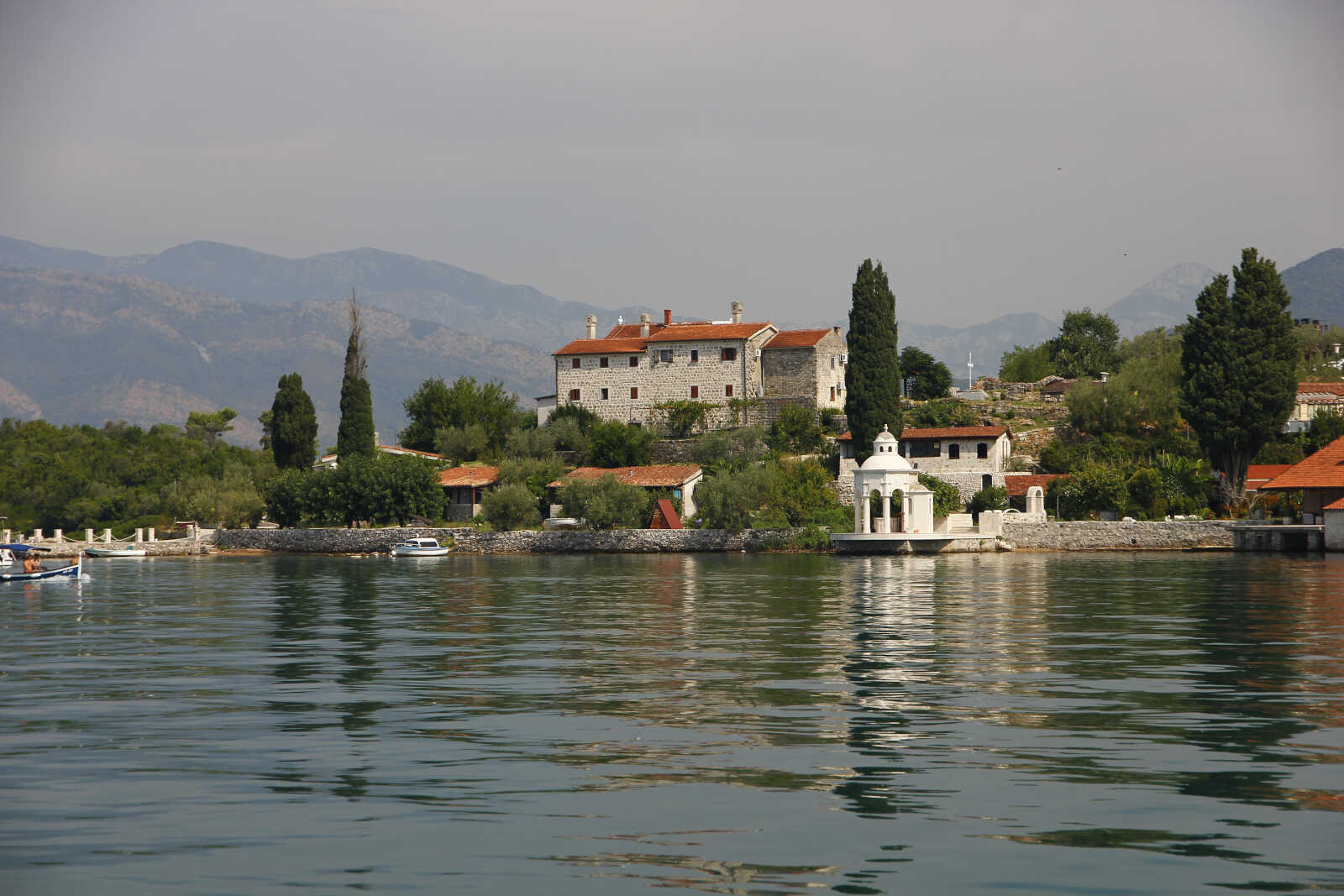
Dall'altro lato di queste due isolette tranquille si trova la cittadina di Tivat, il comune più densamente popolato della regione e animato dai tanti locali e negozi del lungo mare e di „Porto Montenegro“ che era una base navale dell'ex Jugoslavia in totale abbandono fino al 2007, quando è stata acquistata dal miliardario canadese Peter Munk per farne un marina di lusso con annessi hotel e negozi e oggi è una base per super yacht e tante (grandi) barche da diporto con bandiere non europee in un punto strategico del Mediterraneo.
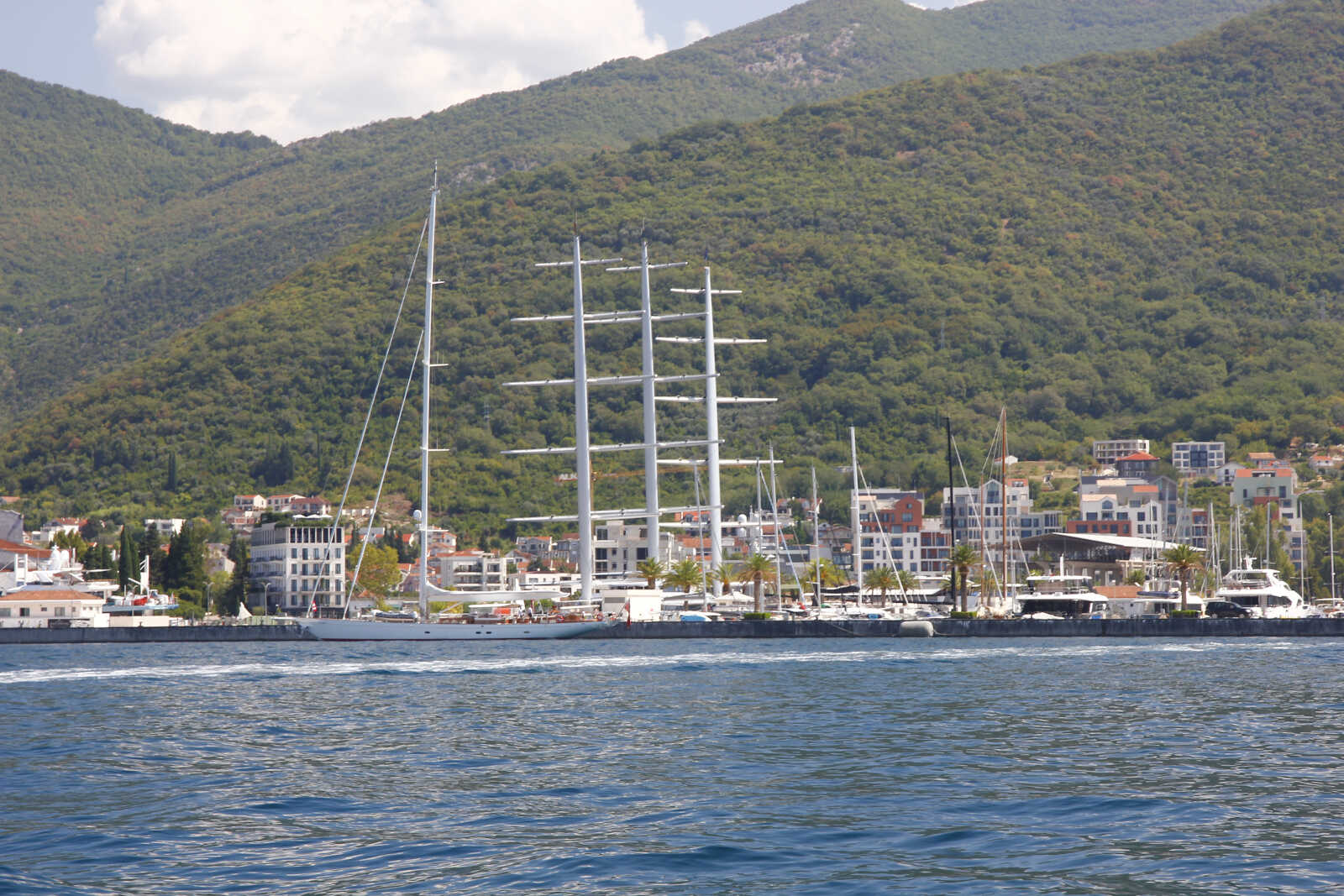
In primo piano un veliero Classe J di circa 25 m, uno dei 9 attualmente esistenti dal primo varo negli anni Trenta per competere nella regata America's Cup e i distintivi tre alberi rotanti e auto-portanti del famoso Maltese Falcon, lo yacht a vela extra-lusso di 88 m che per il suo armo è anche considerato un opera ingegneristica unica al mondo.

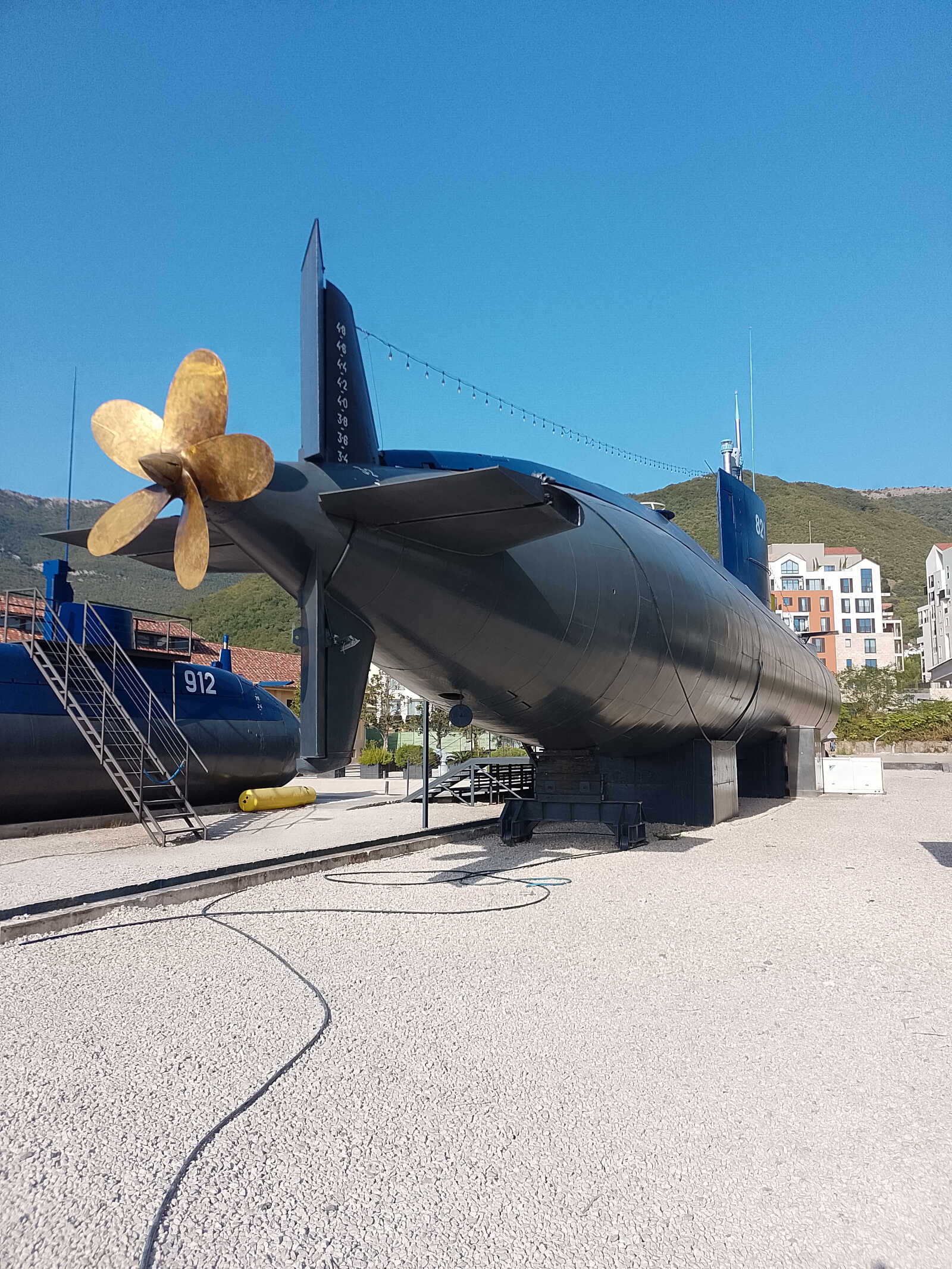
Due sottomarini della flotta jugoslava esposti dietro al Museo Navale di Tivat, uno è stato sott'acqua ininterrottamente per 276 giorni!
Il Golfo di Risan è un altro angolo incantevole fatto di piccoli paesi di villeggiatura e una perla di architettura veneziana: Perast.
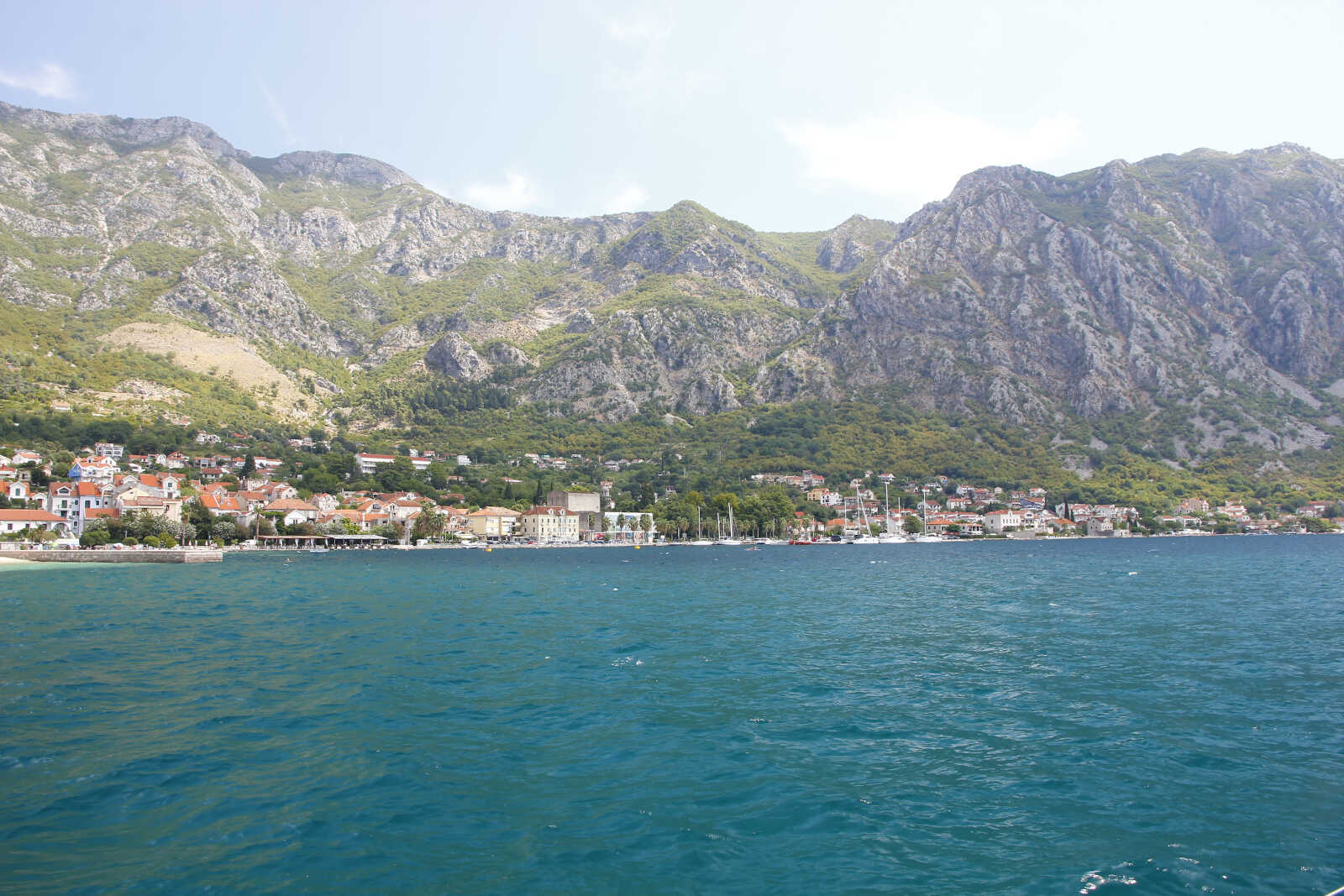
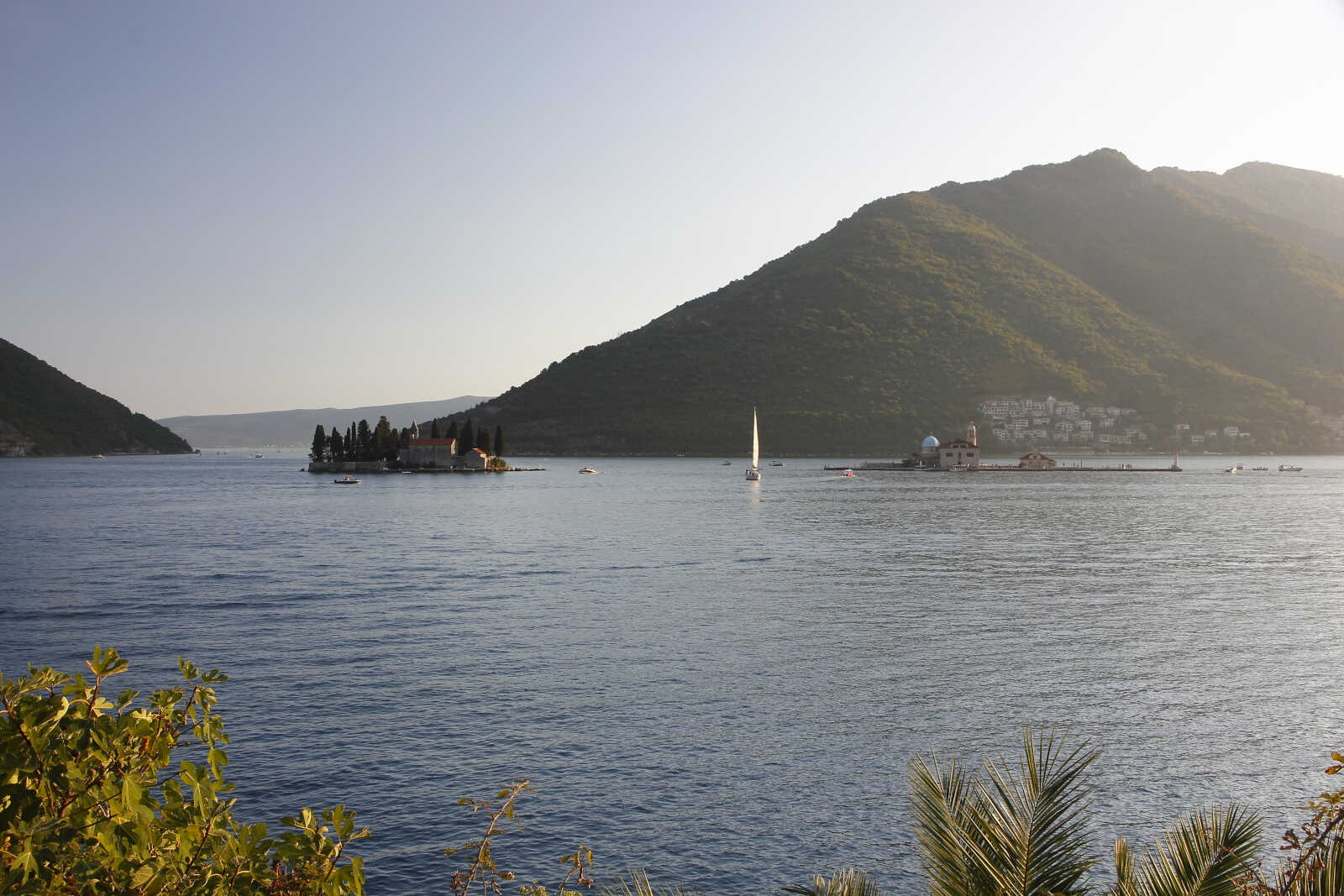
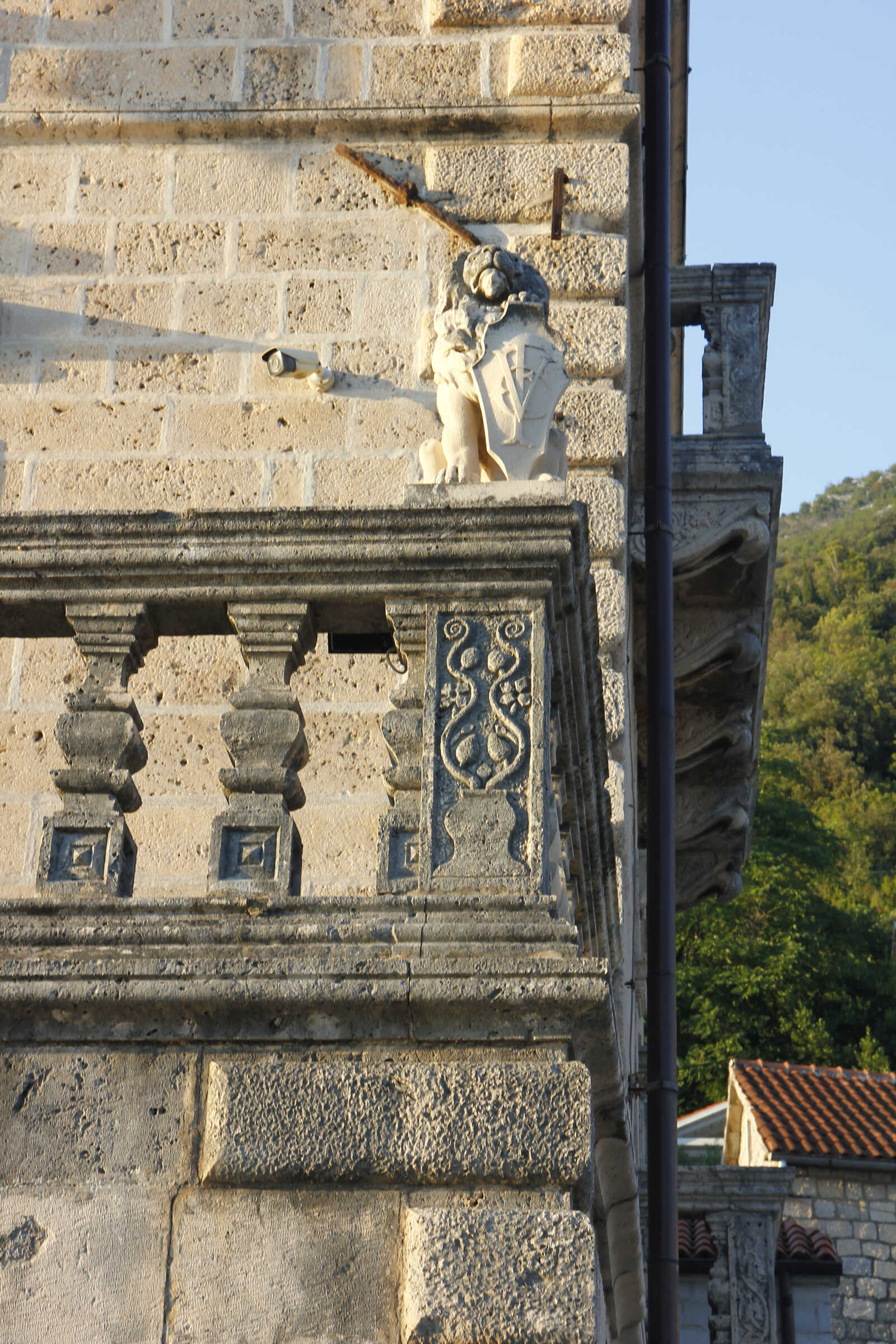
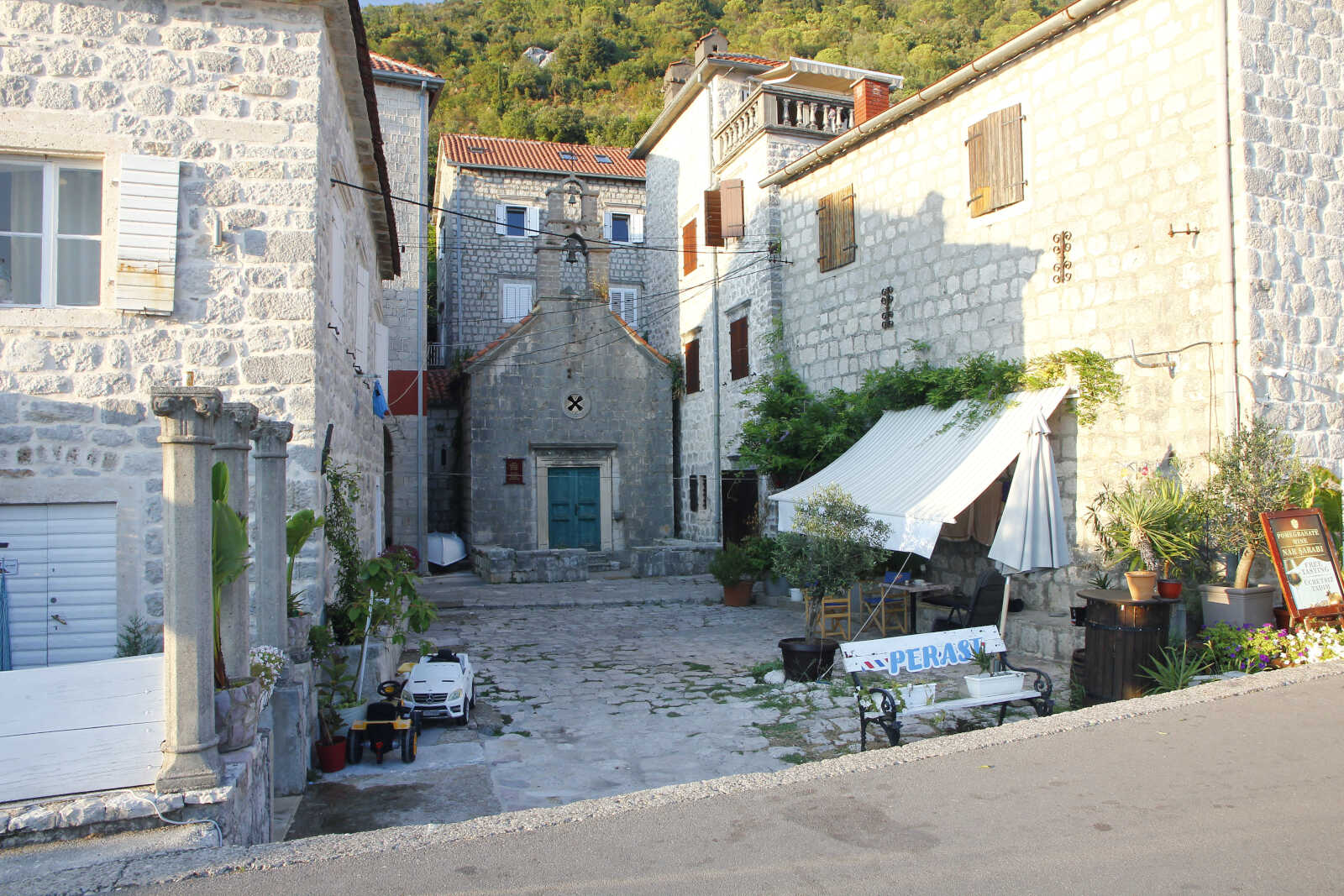
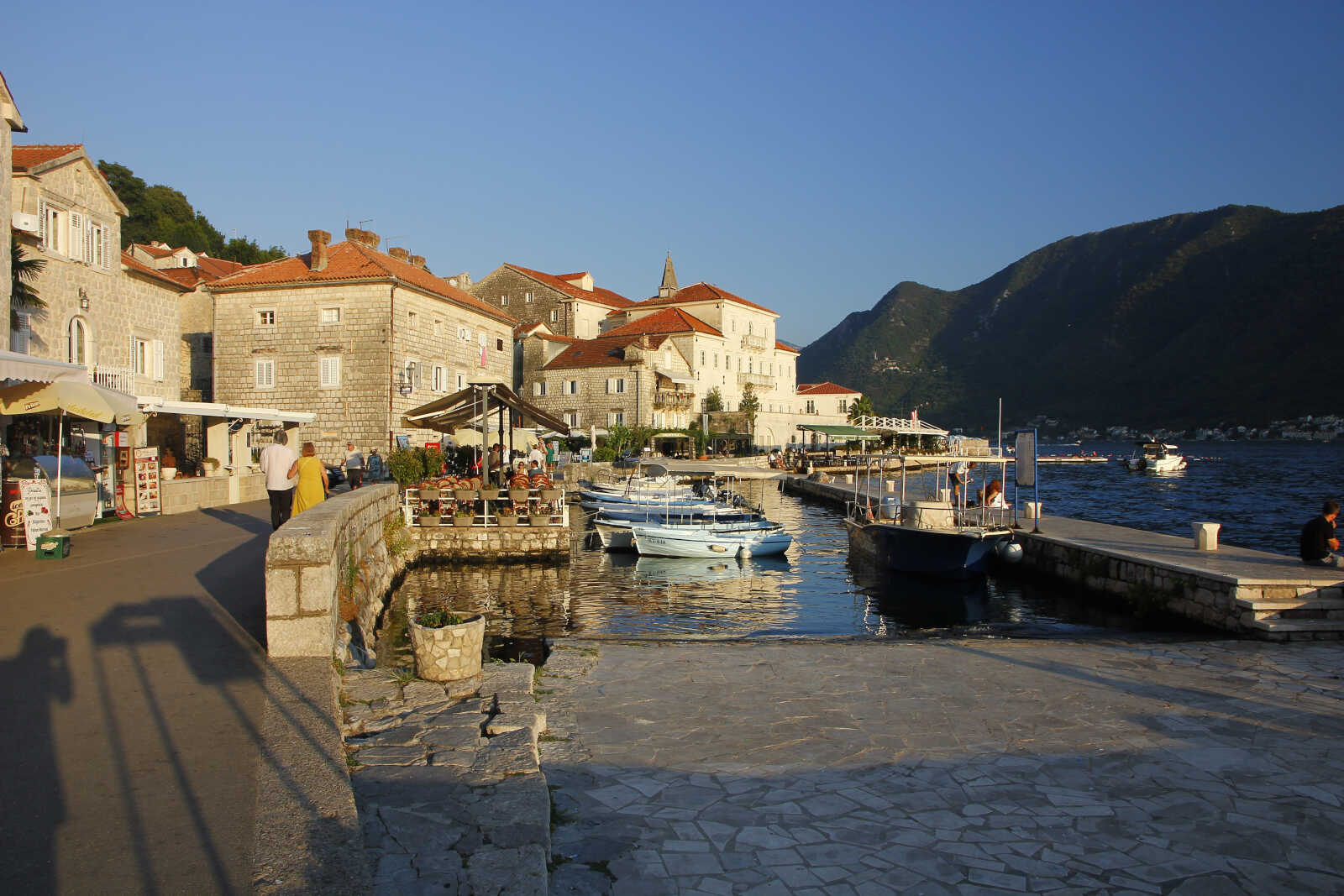
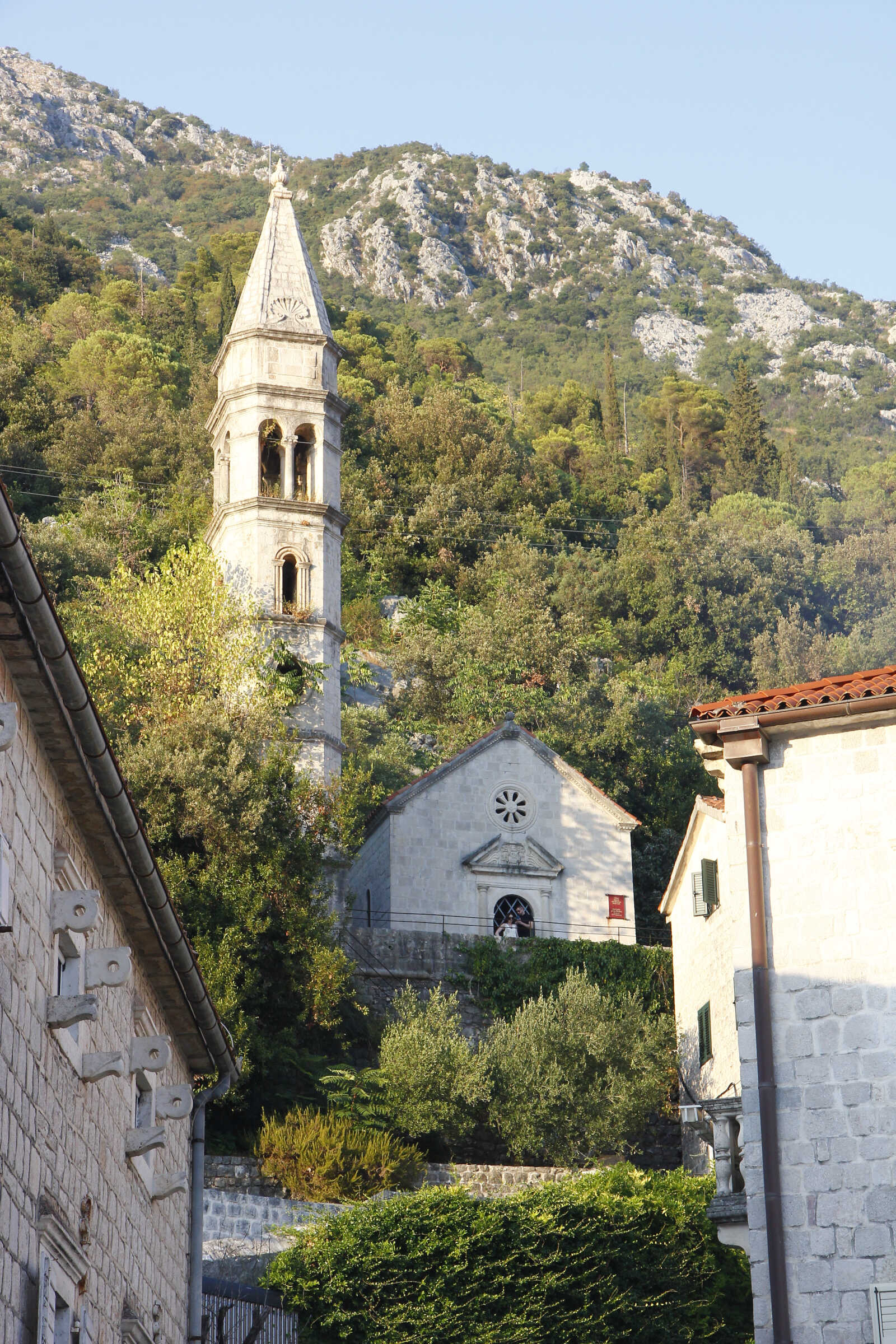
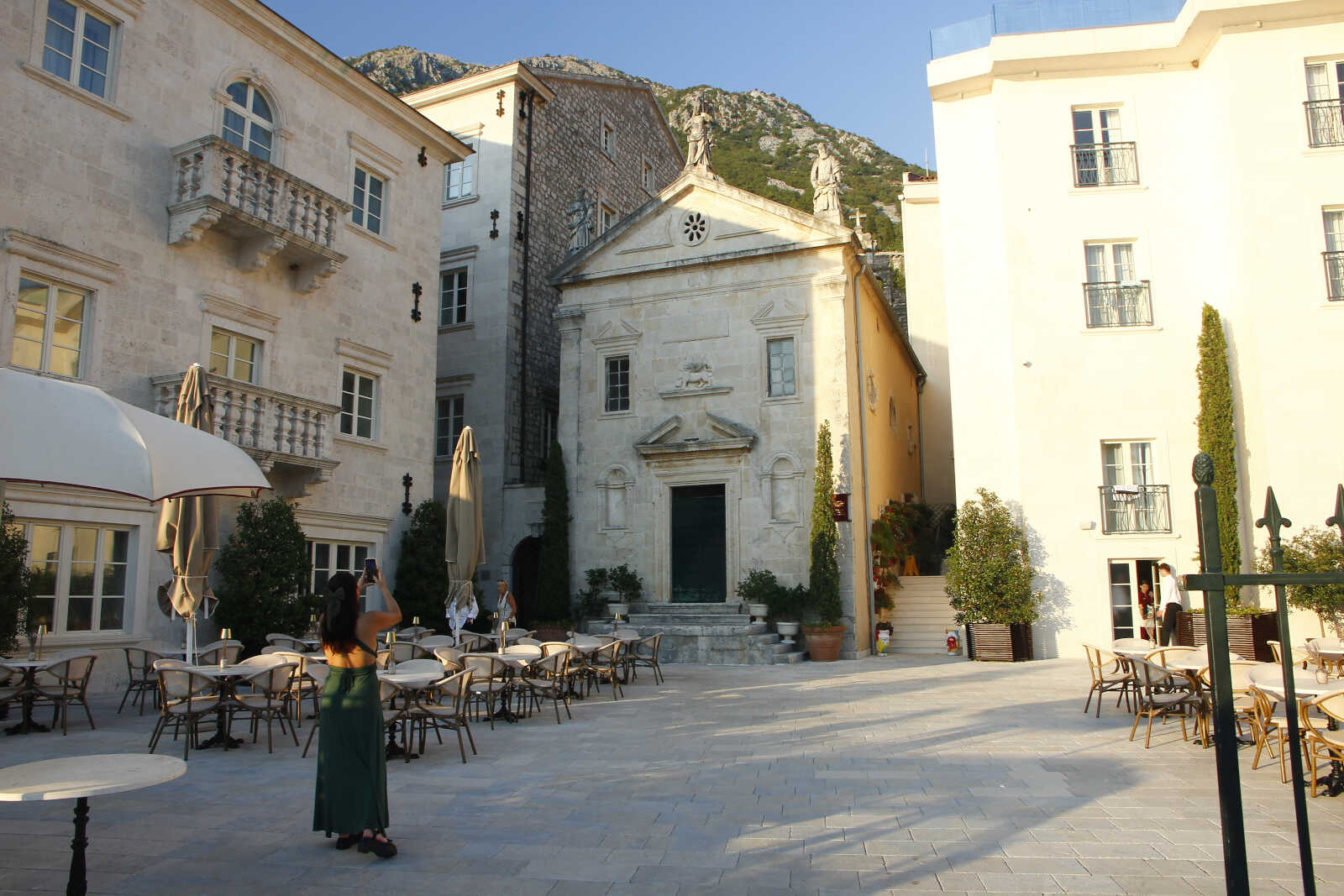
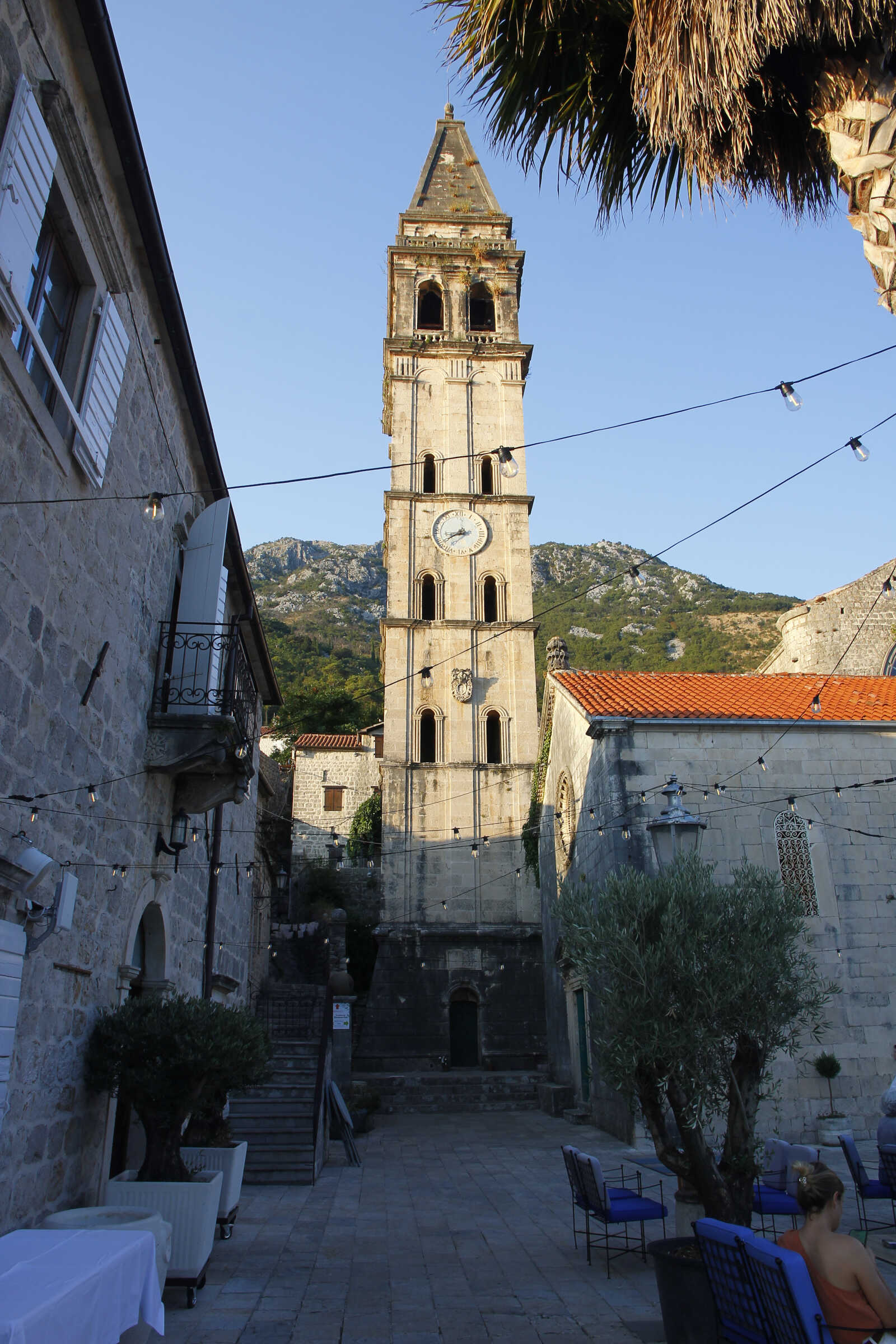
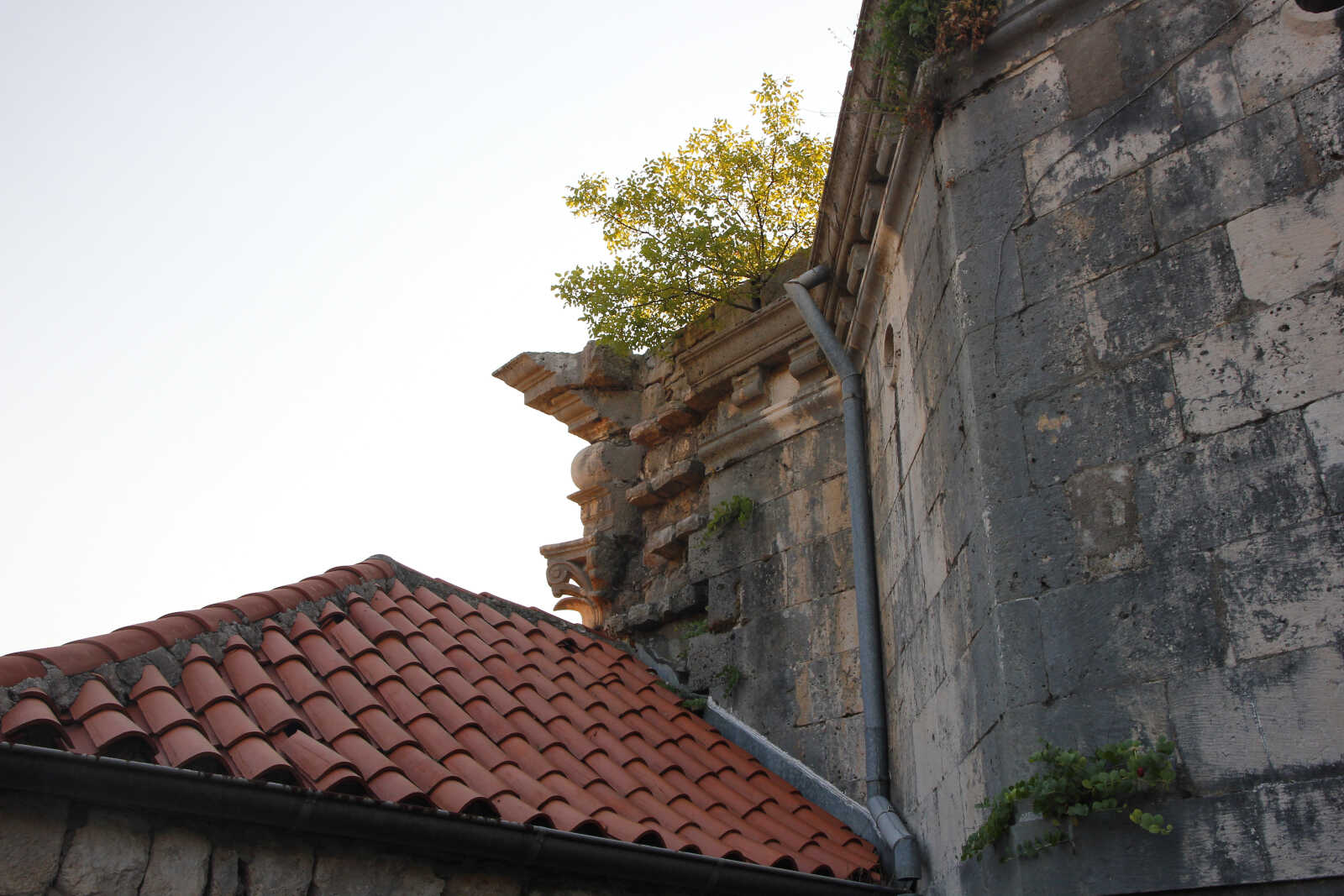
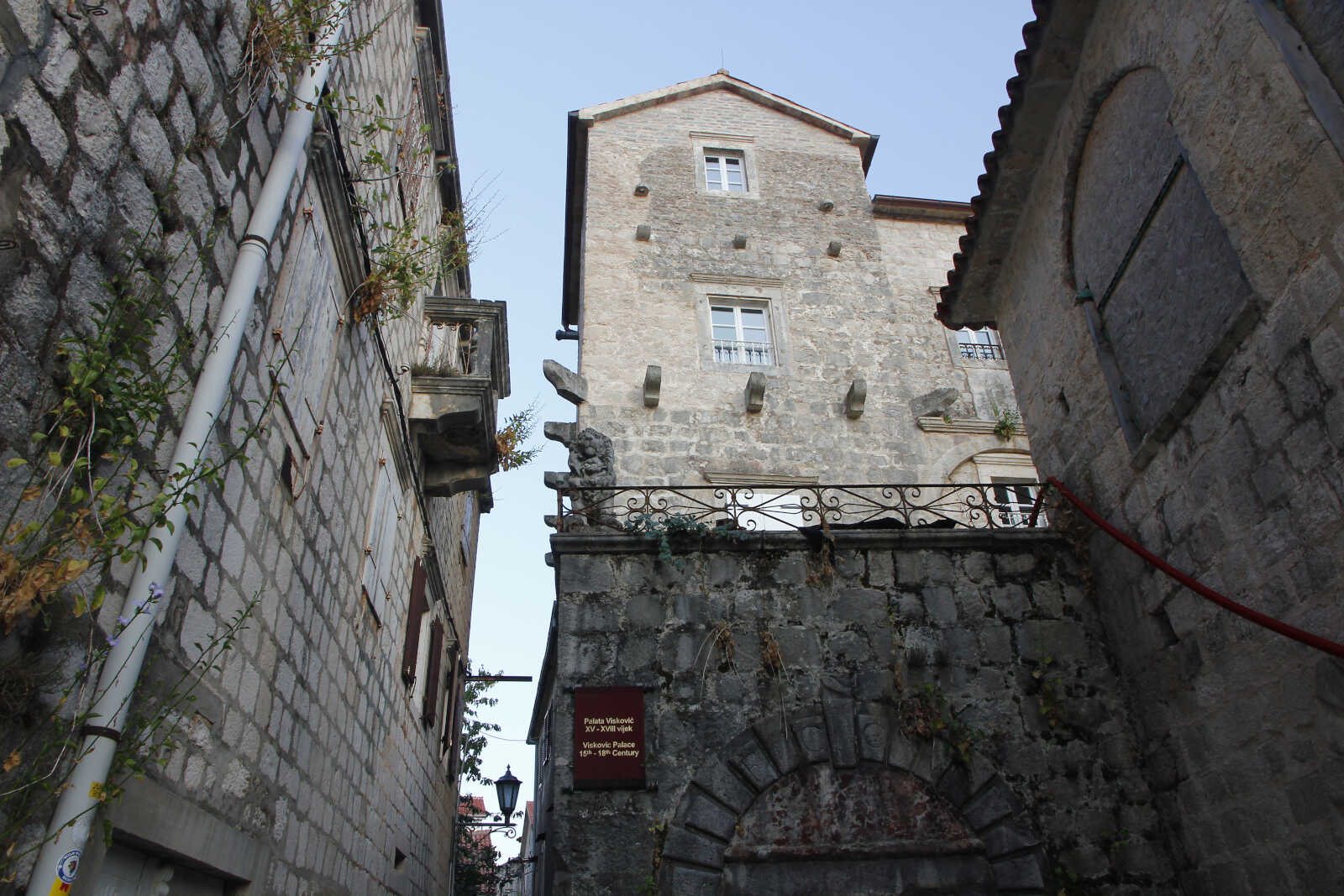
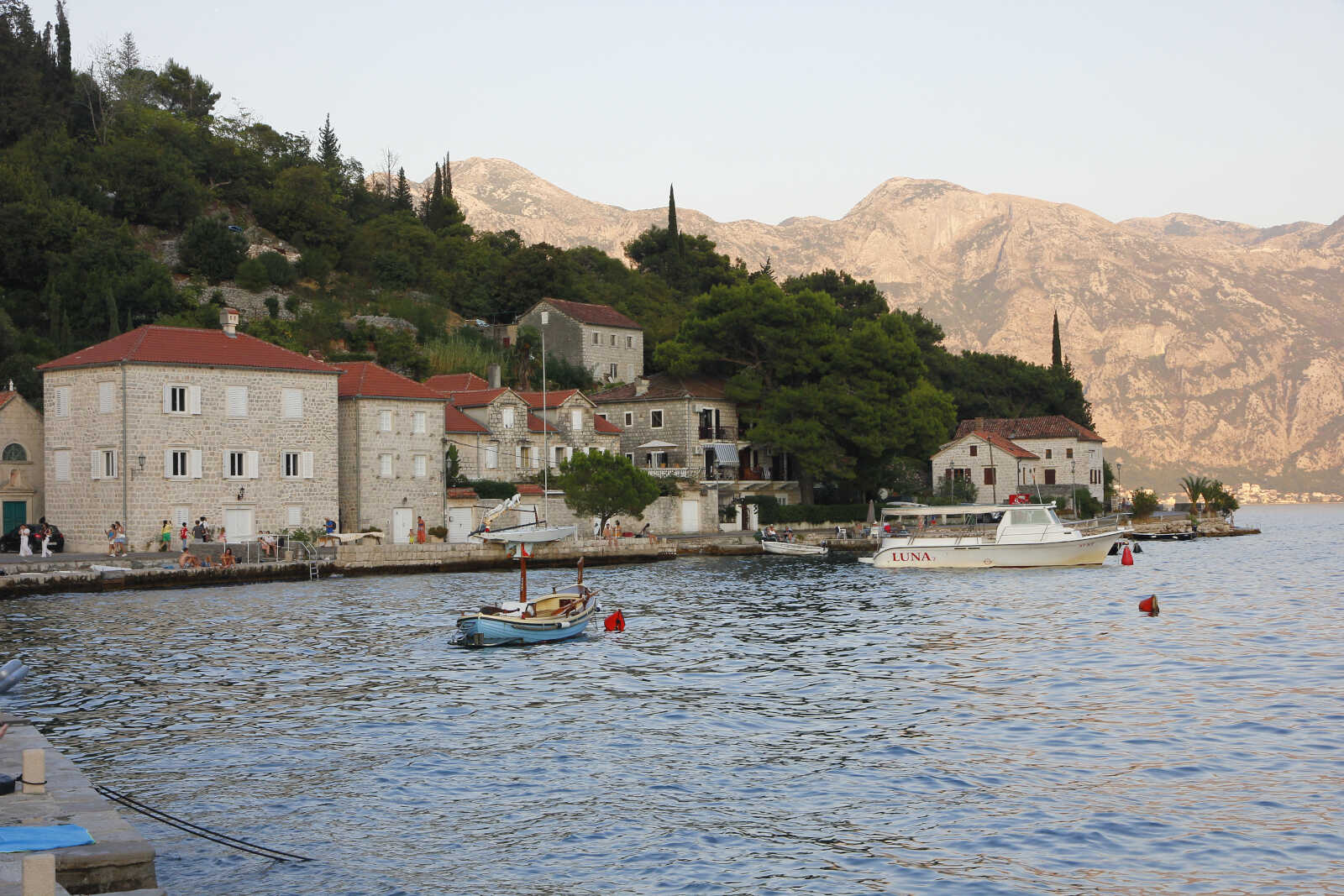
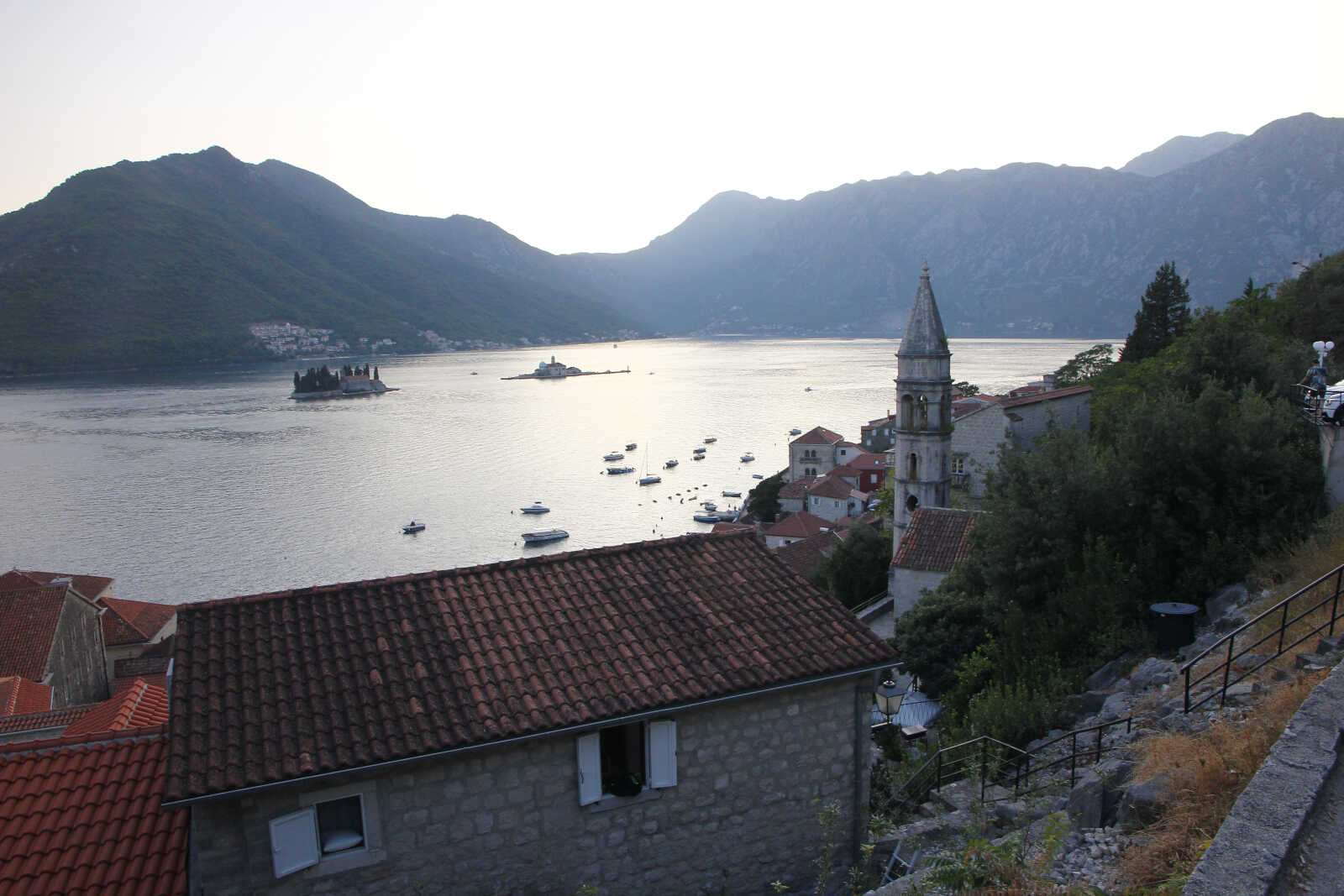
Abbiamo trovato anche delle inaspettate incisioni rupestri, testimonianza della presenza dell'uomo nell'area sin dall'età del Bronzo, che si possono raggiungere facendo un sentiero di un paio di km immersi nella vegetazione vicino al villaggio di Lipci.
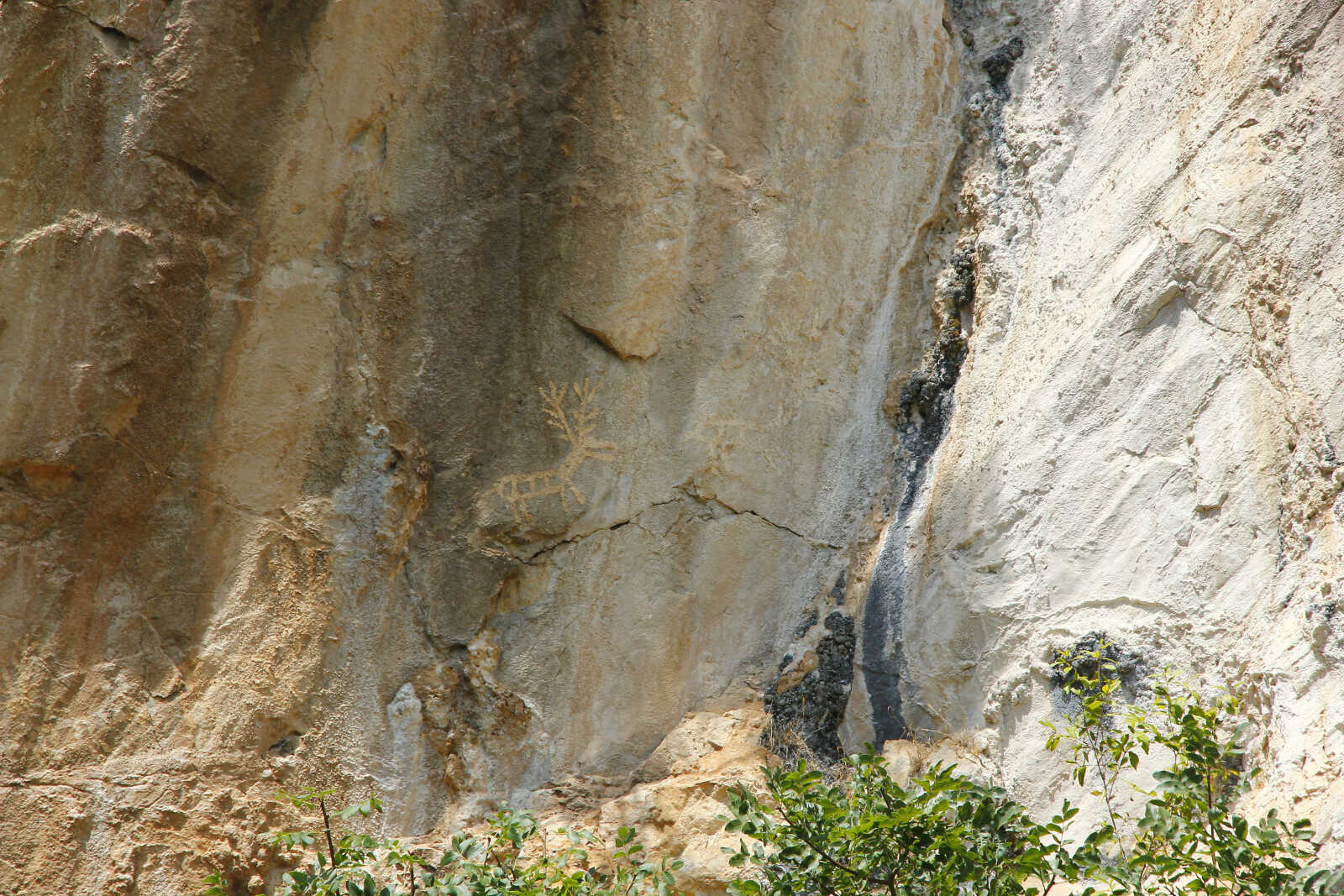
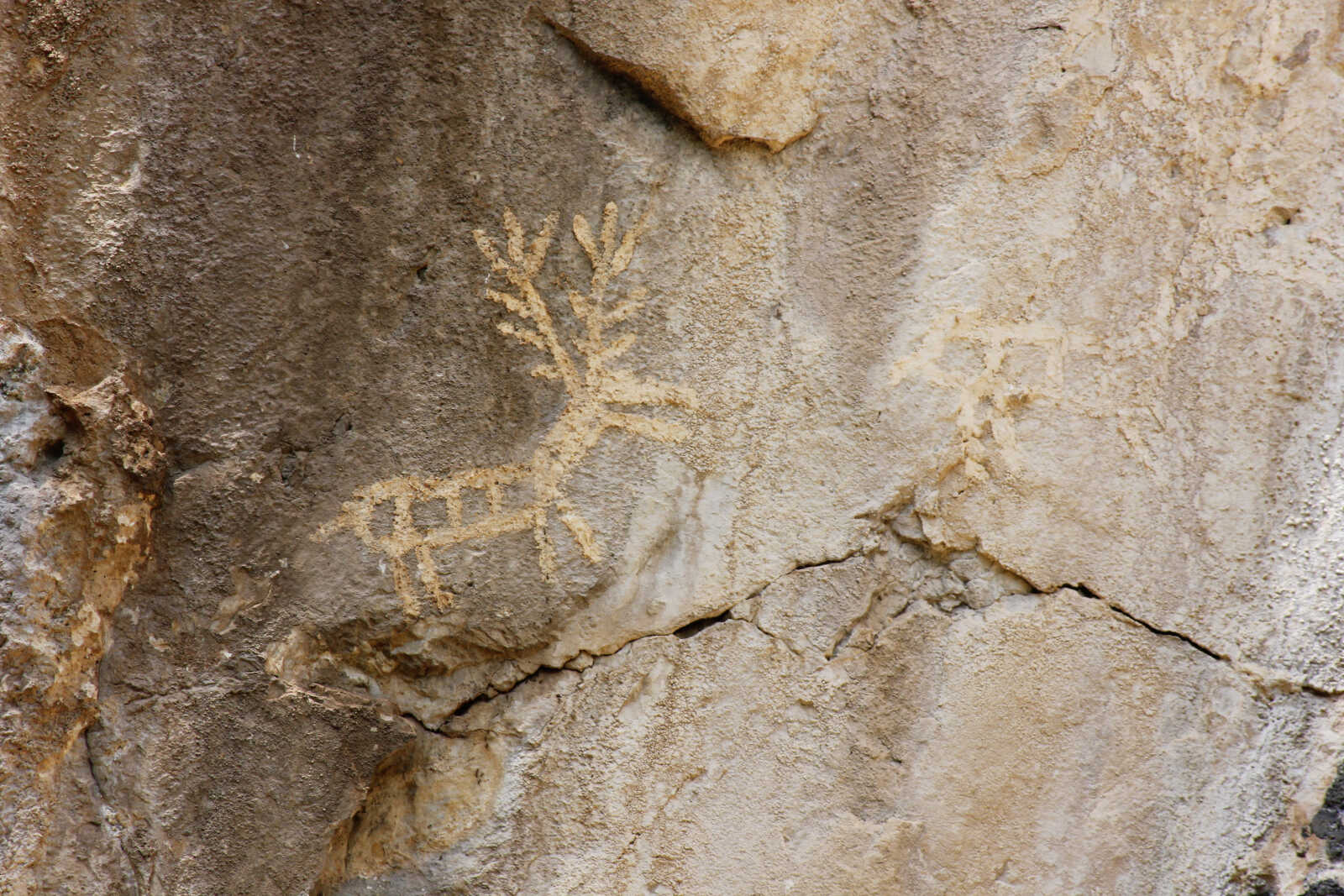
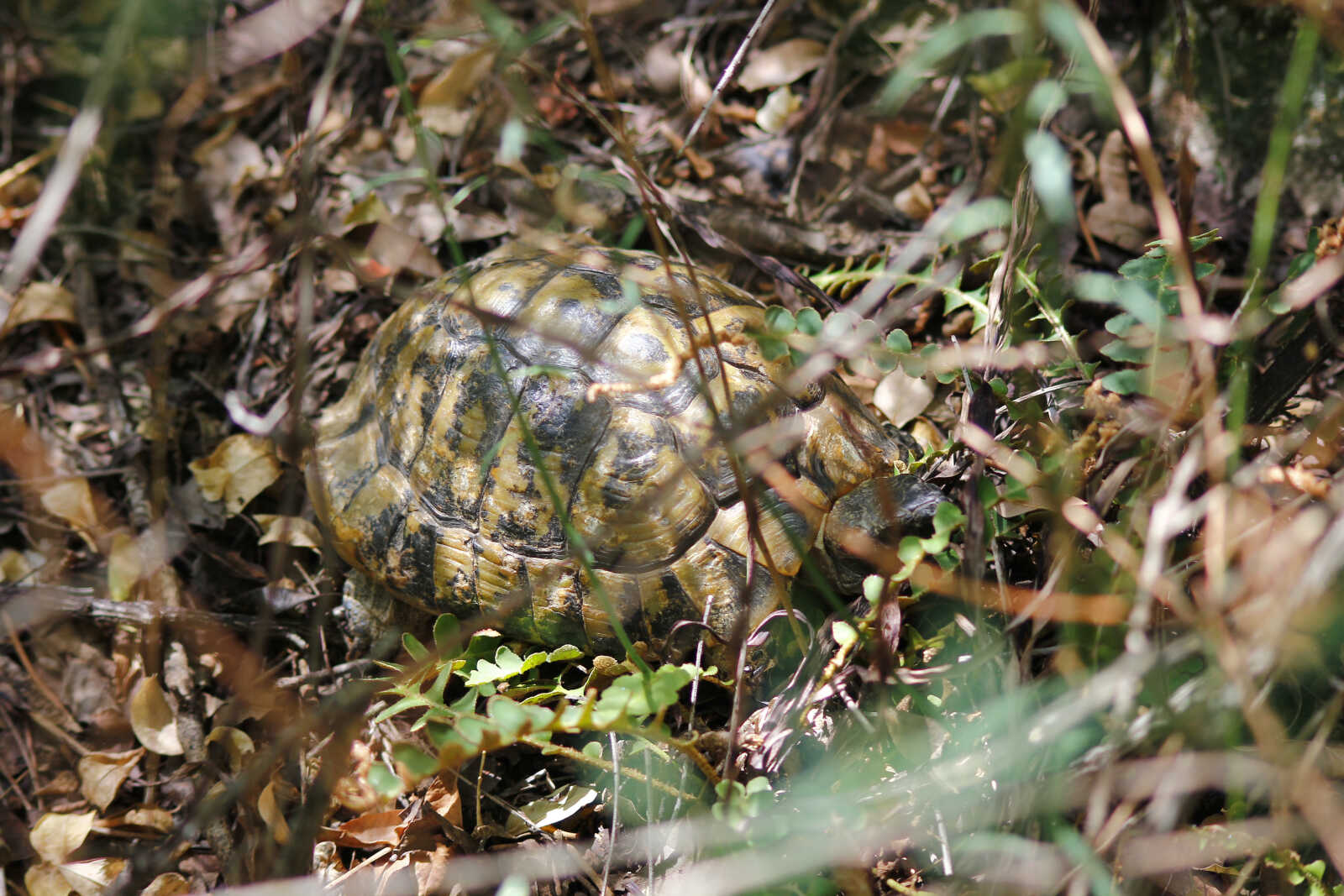
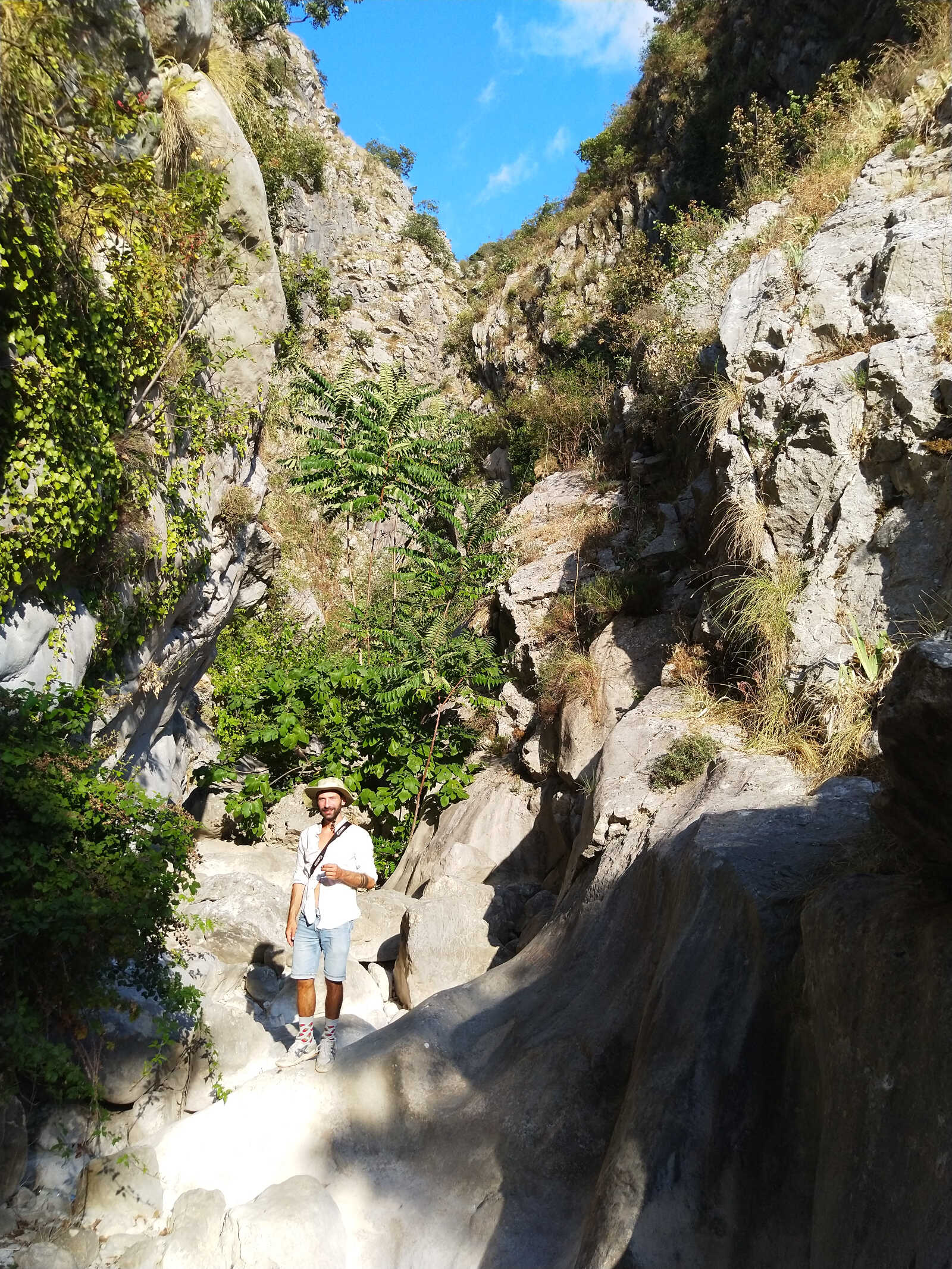
Non potevamo non assaggiare le famose cozze e ostriche di queste acque in uno degli allevamenti che abbiamo raggiunto con il tender a pochi metri dalla barca per un pranzo semplice ma gustoso.
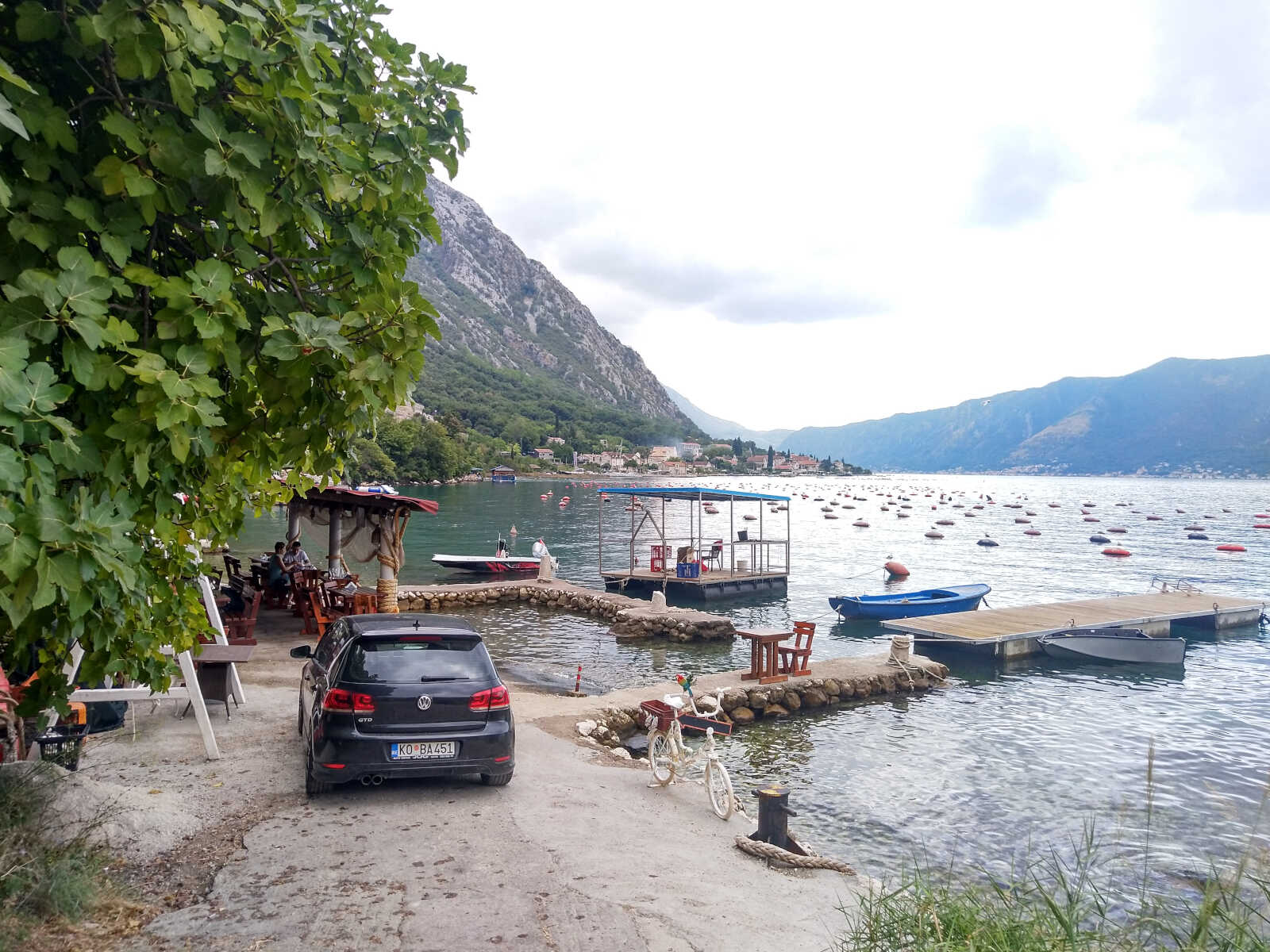
Il centro più importante dell'area è la città di Kotor (Cattaro) da cui prendono il nome le Bocche. Si tratta di una città veneziana fortificata, dove fino agli anni Cinquanta risiedevano molti italiani e ancora oggi è la sede Comunità Italiana del Montenegro. Passeggiando per le vie, ci si rende conto della forte presenza di turismo, ma sembra ci siano ancora locali e centri culturali per le persone che ci vivono e tra un Leone di Venezia e una fontanella, non mancano pub e chiese ortodosse.
Il sistema di fortificazioni della città assunse il suo aspetto attuale per opera dei veneziani nel XV secolo dopo che Cattaro pregò per ben 25 anni di entrare a far parte dei domini della Serenissima per timore dell'avanzata ottomana. A quanto pare in dialetto veneziano esiste ancora il detto “Te me xi pí cara dee mura de Cataro!” per una donna che pretende troppo economicamente.
Noi siamo saliti alla fortezza non camminando sulle mura, ma lungo il sentiero “Scala di Cattaro”che passa anche attraverso un villaggio abbandonato e dona scorci mozzafiato sul Monte Lovćen e la baia sottostante.
Abbiamo fatto coincidere la nostra visita alla città con la sera dell'evento “Bokeljska Noc”, in cui ogni anno, nel terzo sabato di agosto, si celebra l'identità marinaresca di Cattaro con la sfilata del club velico locale e la sfilata di decine di piccole barche illuminate e addobbate tipo carri mascherati (l'evento è considerato un secondo Carnevale). Il tutto si conclude con uno spettacolo pirotecnico, che abbiamo rischiato di vedere da troppo vicino visto che, senza saperlo, nel pomeriggio eravamo ancorati nel perimetro dal quale li sparavano :)
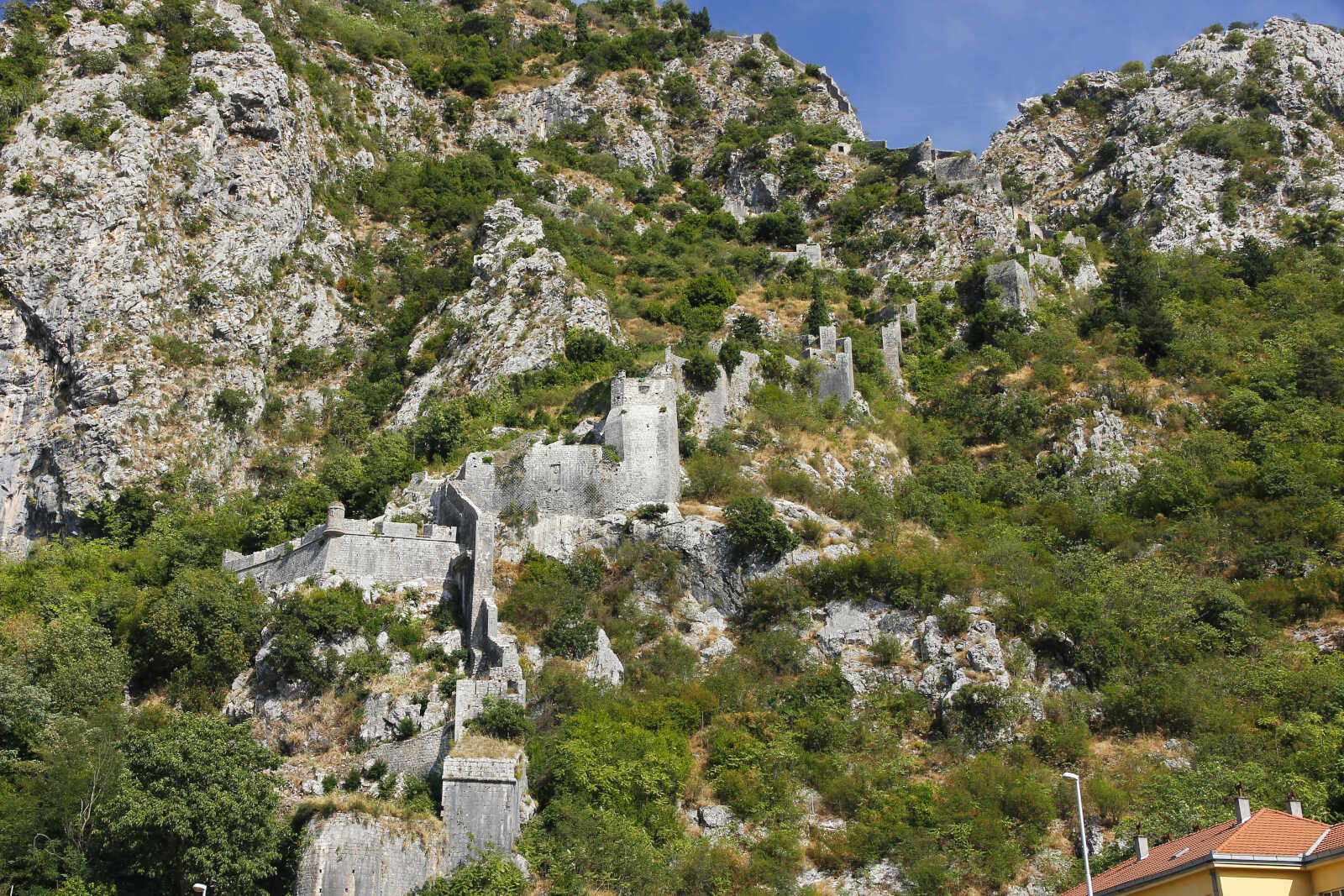
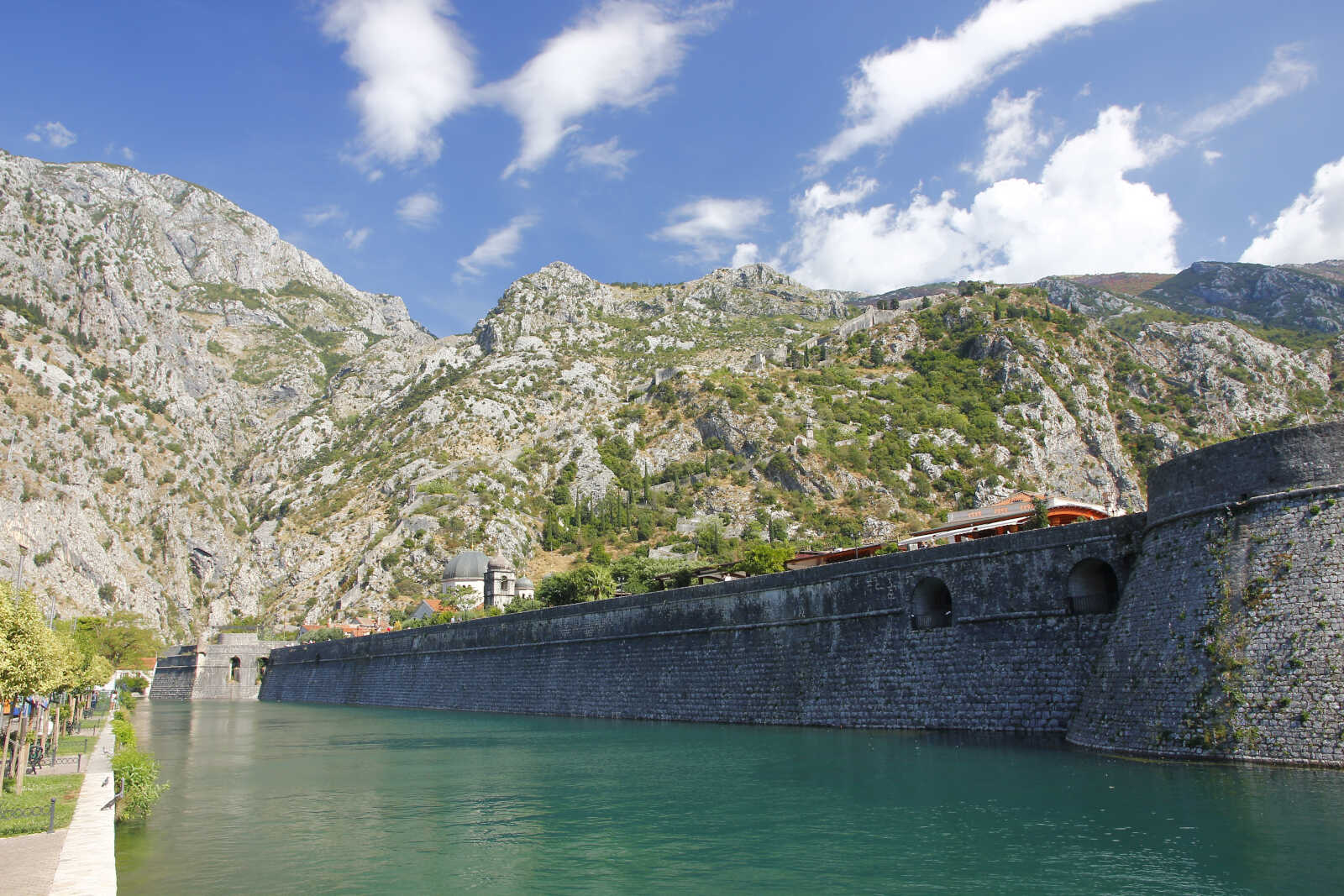
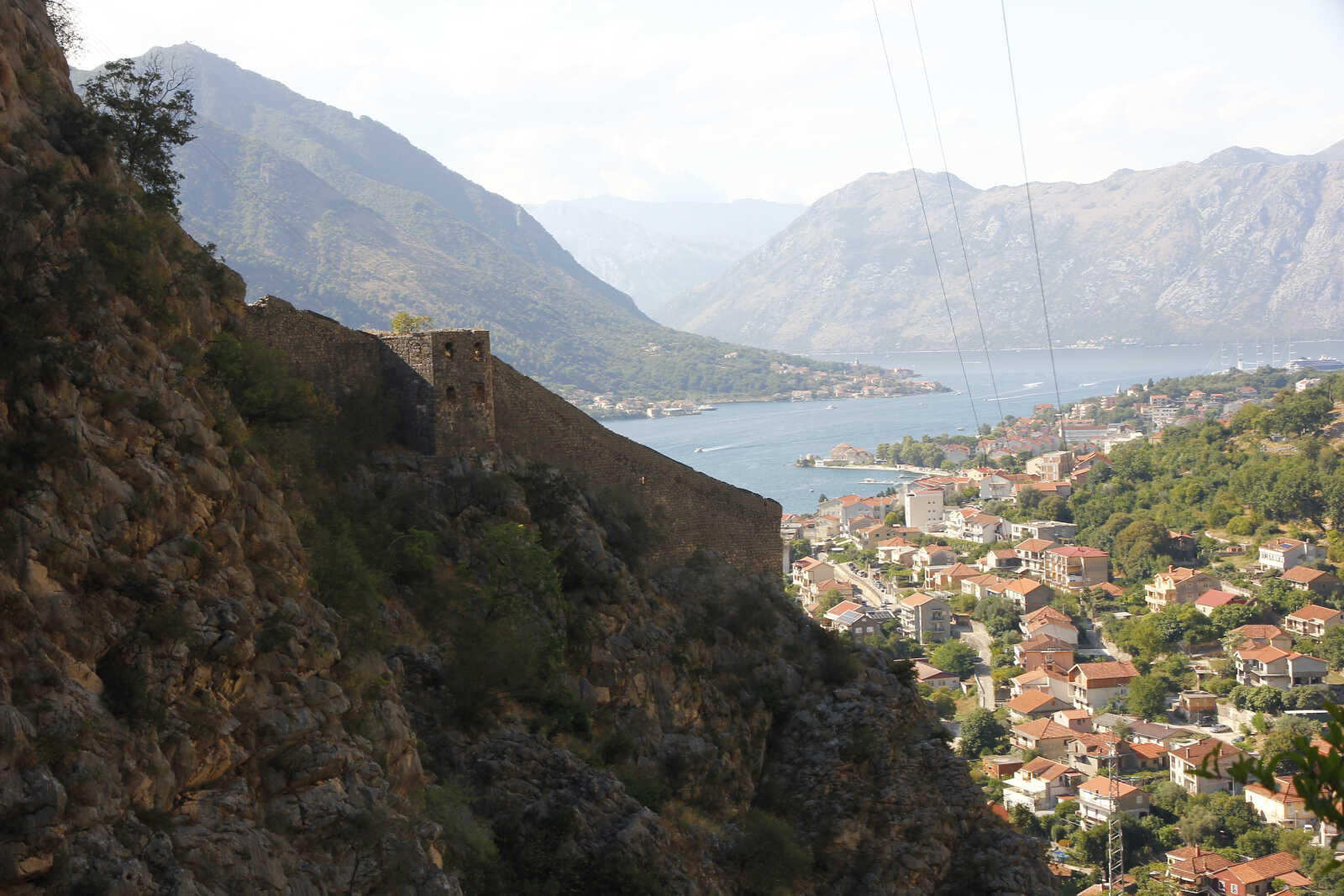
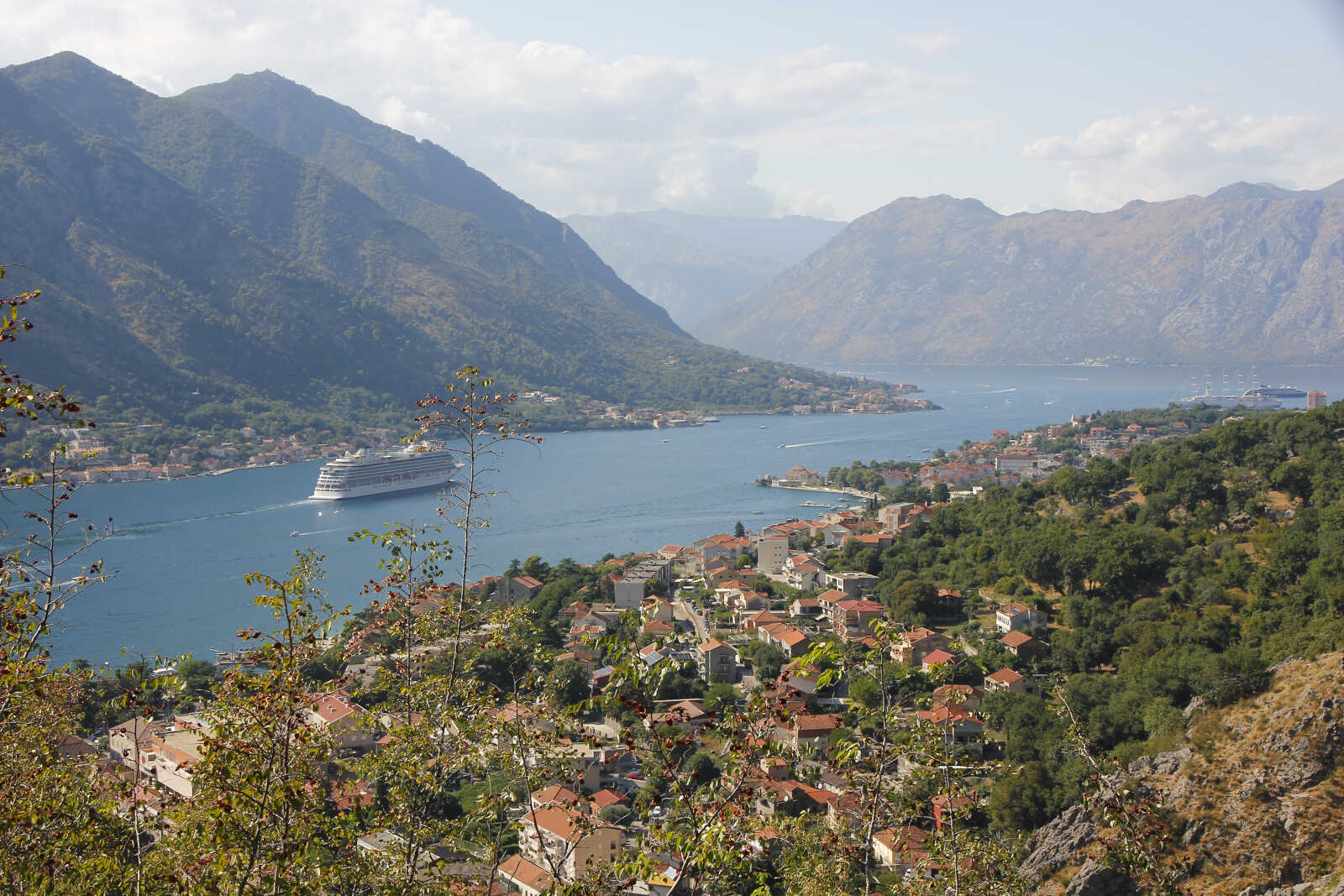
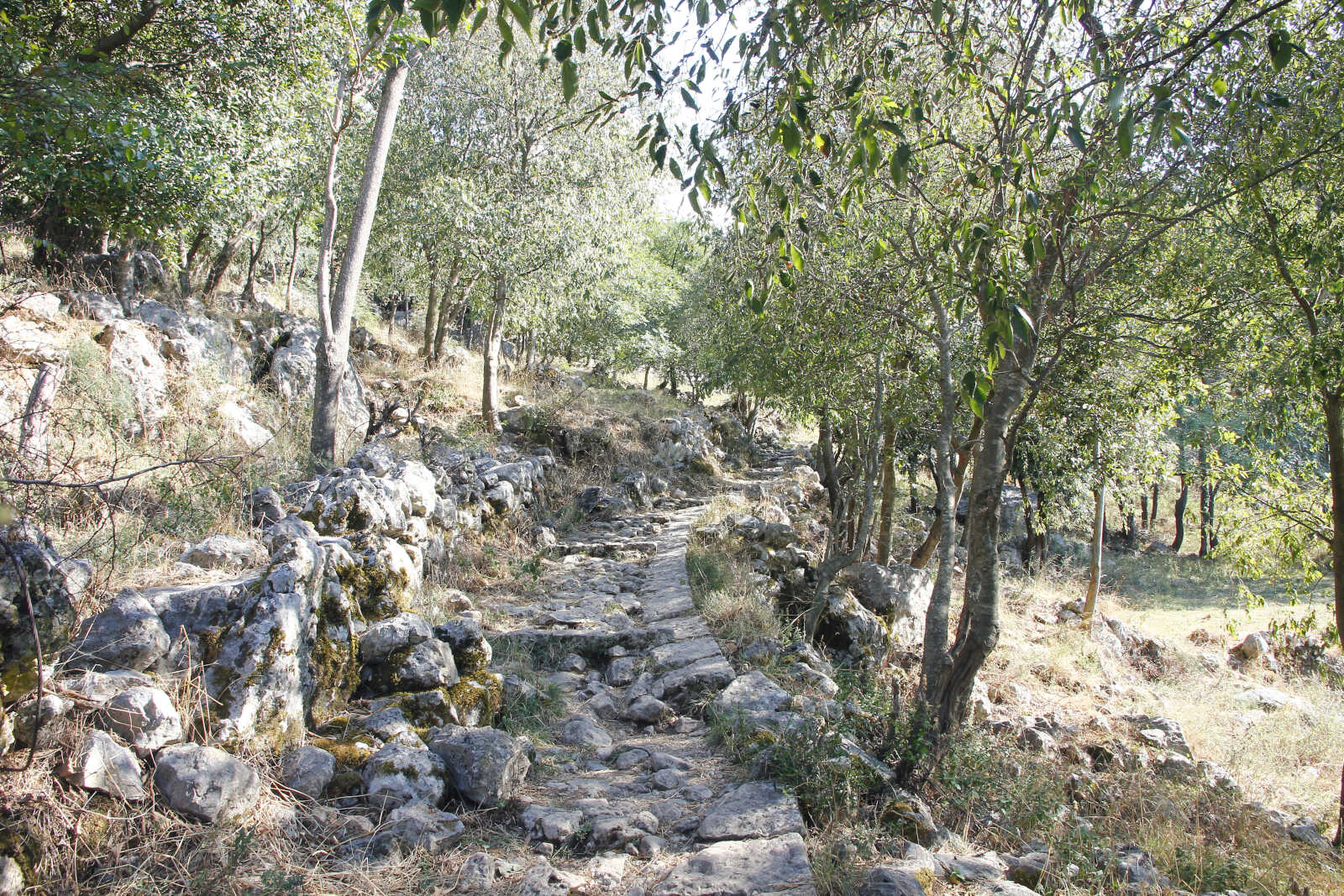
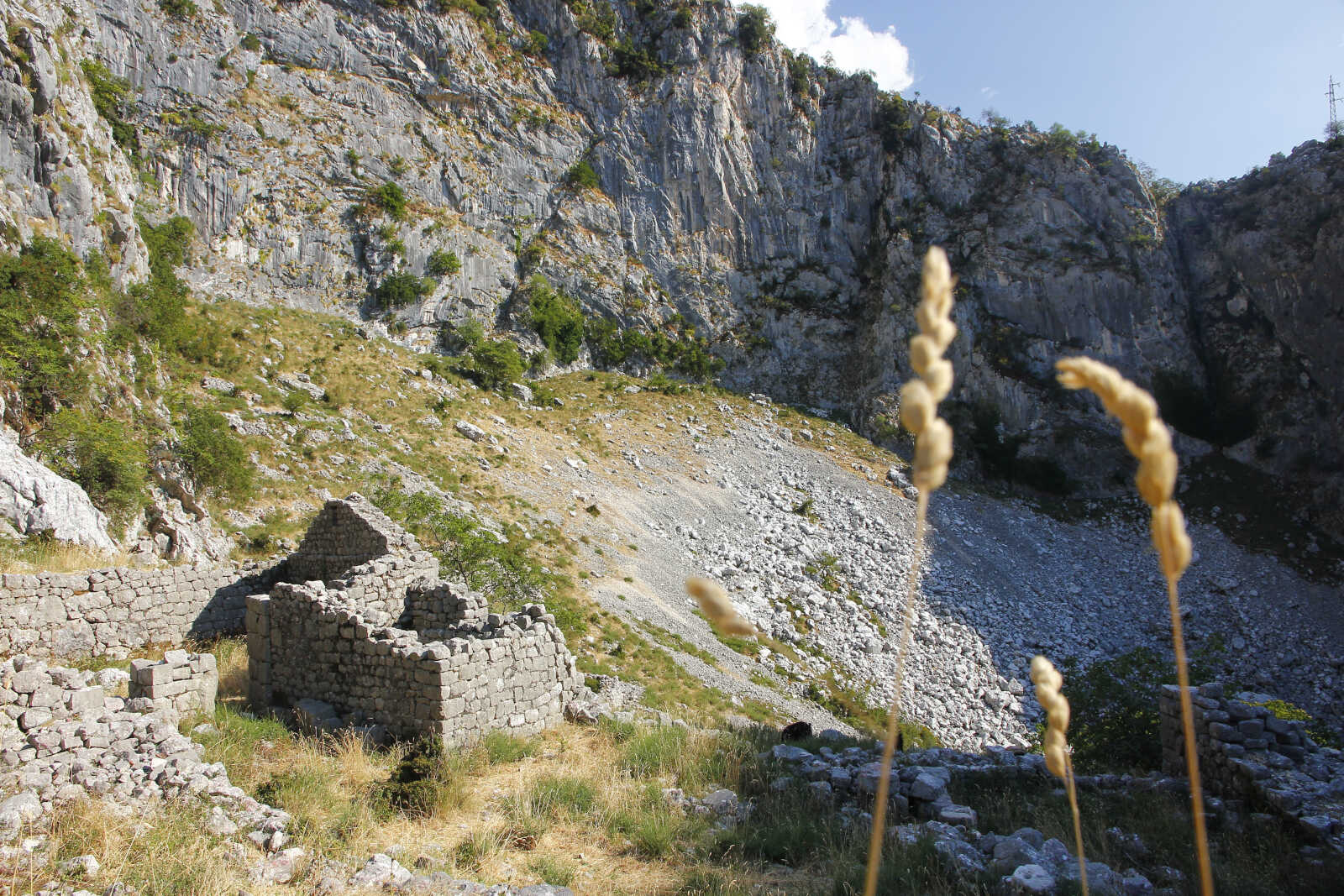
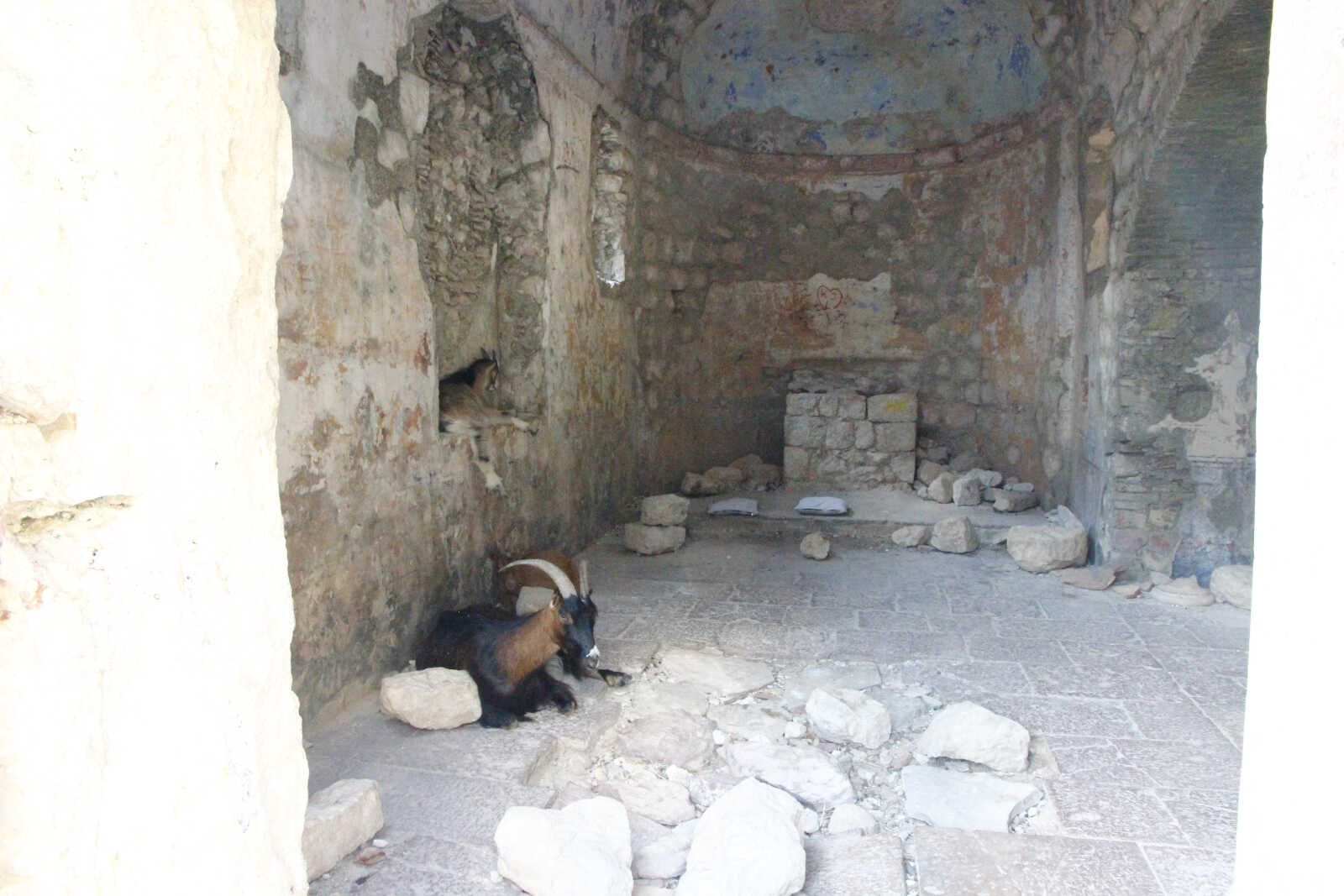
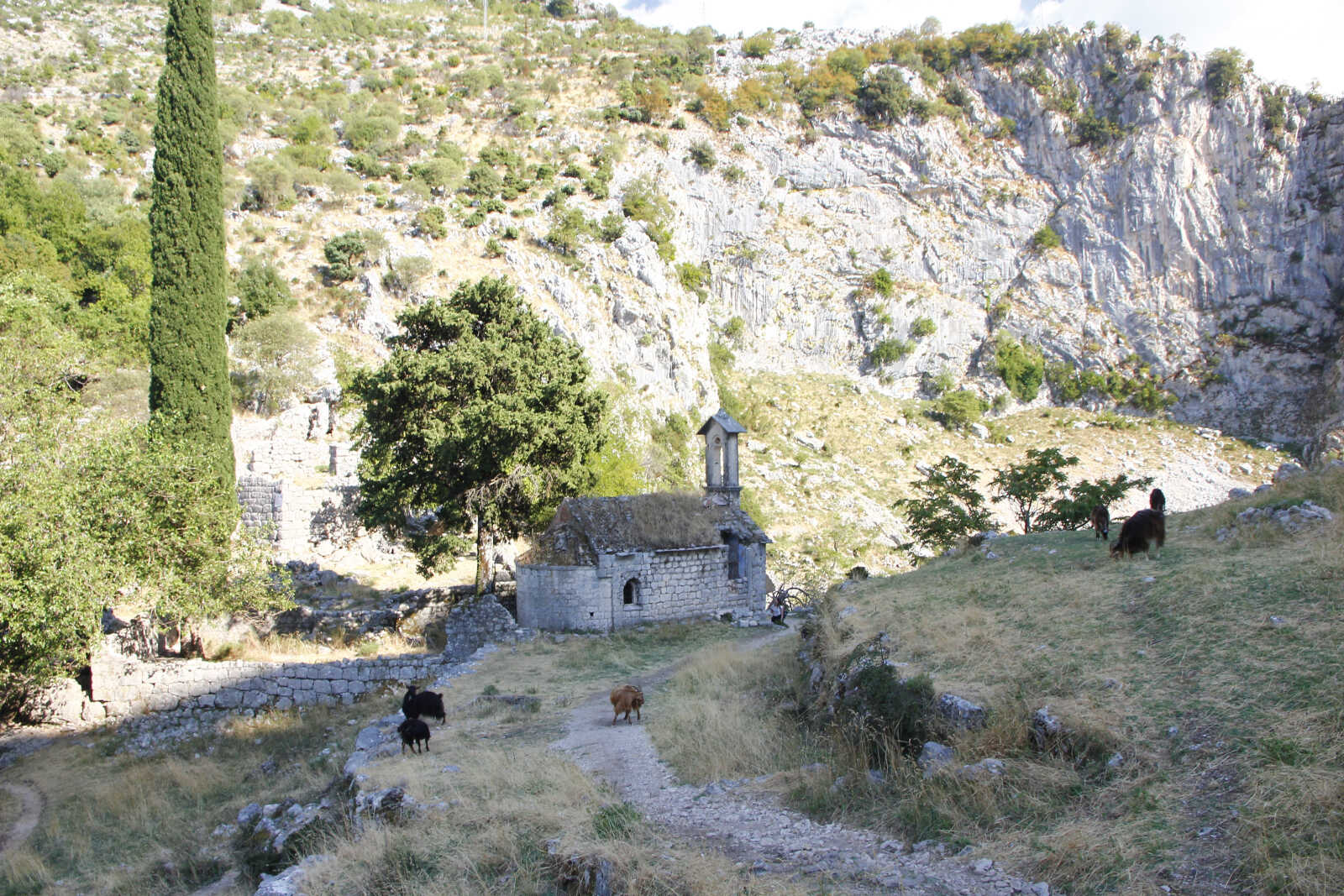
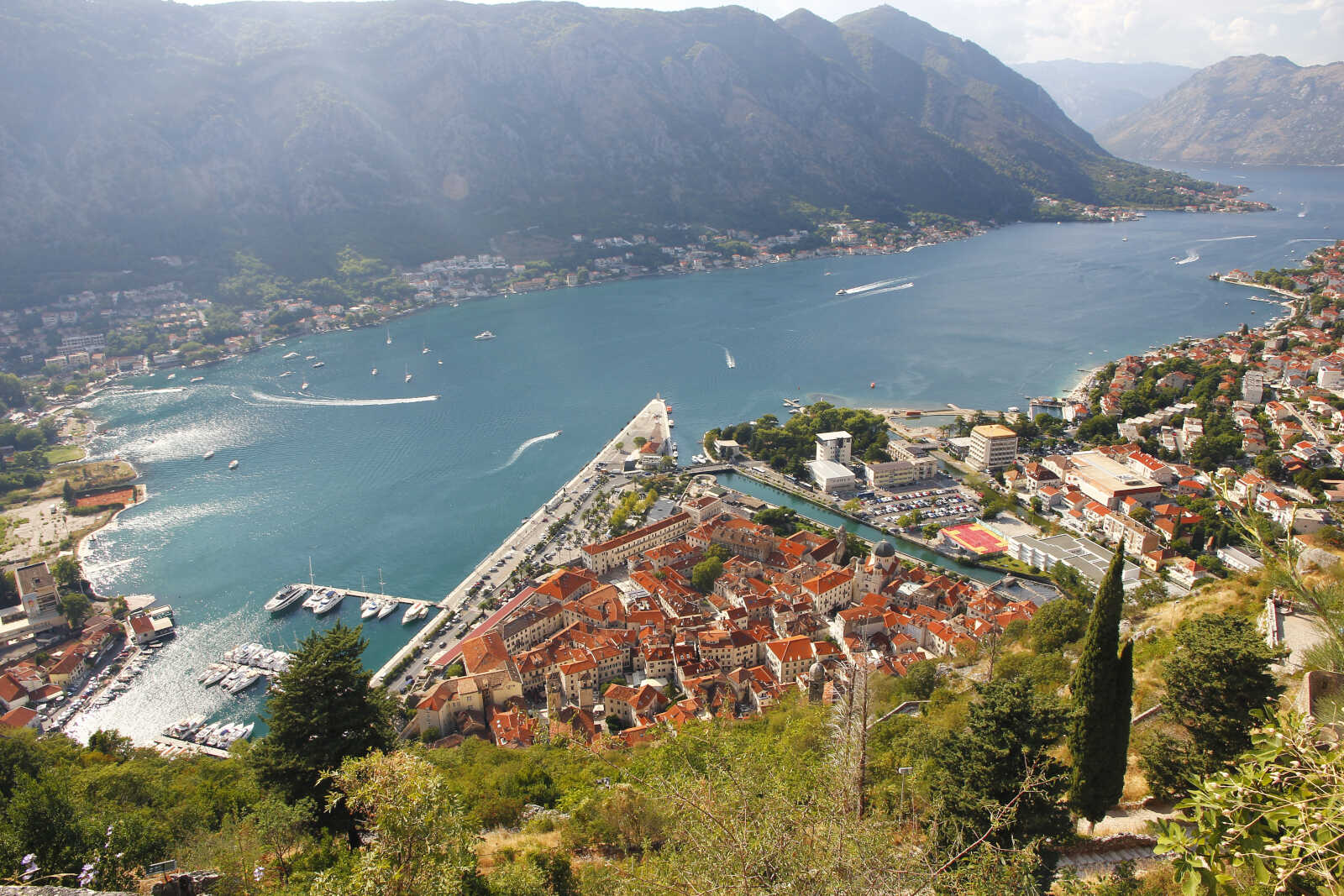
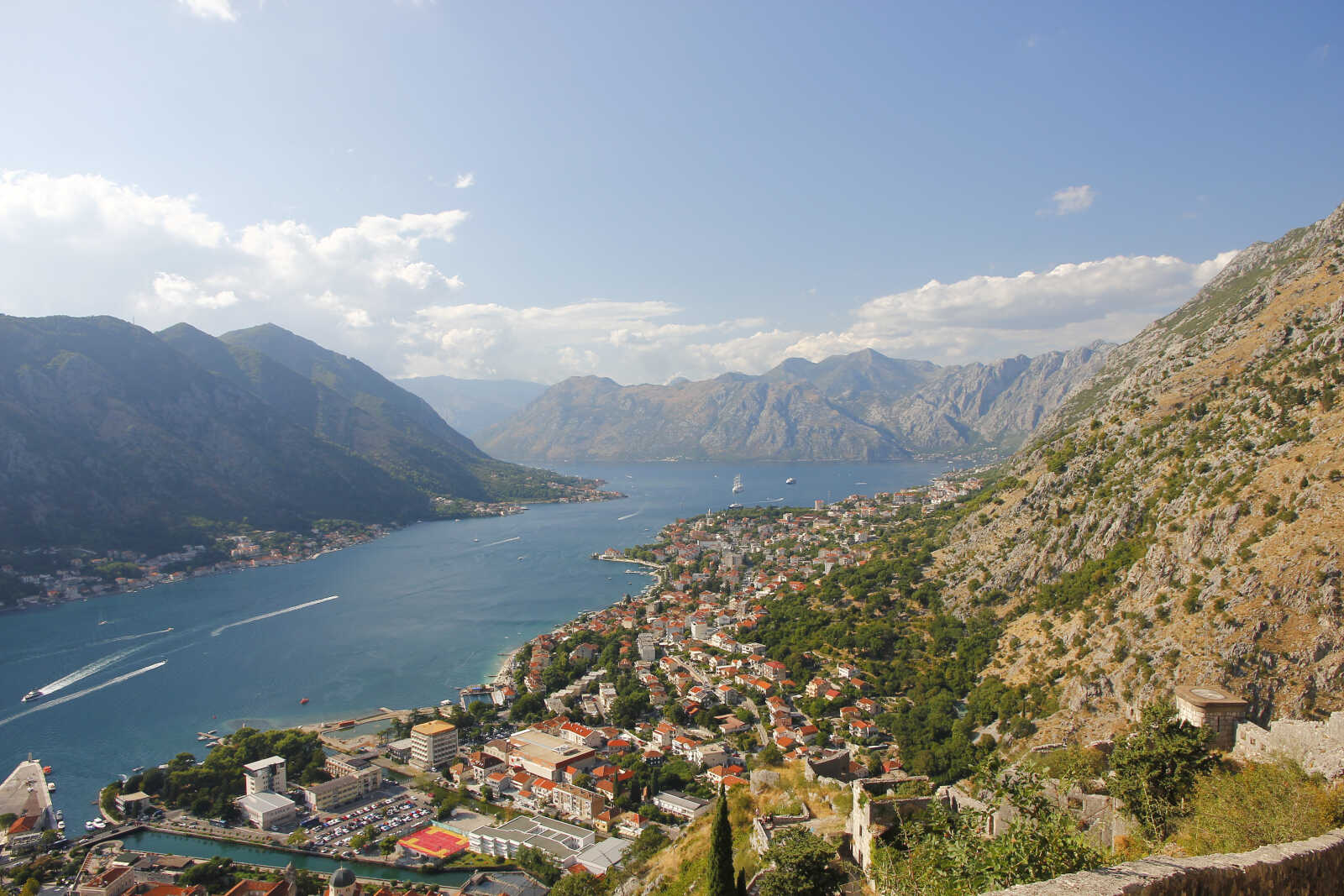
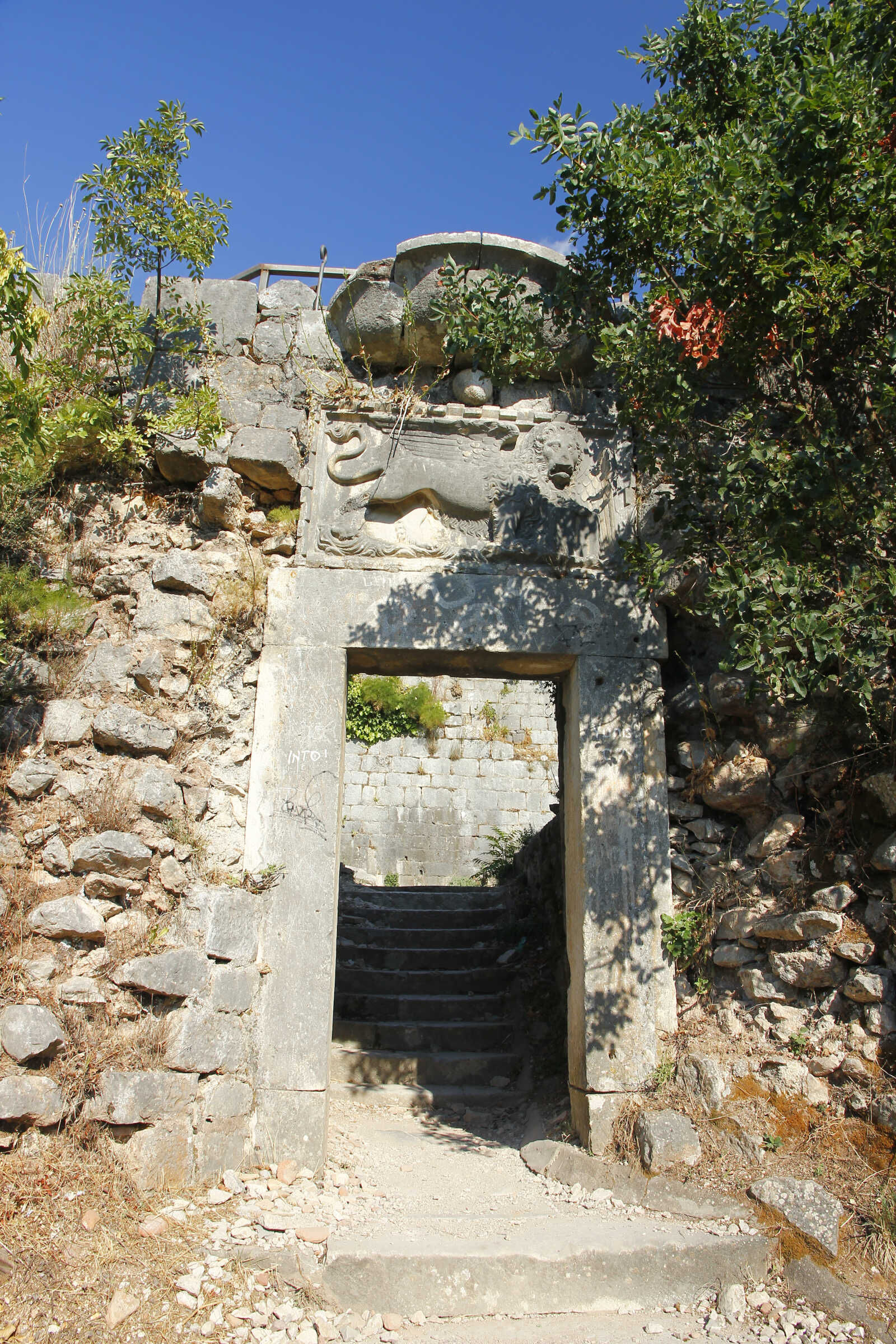
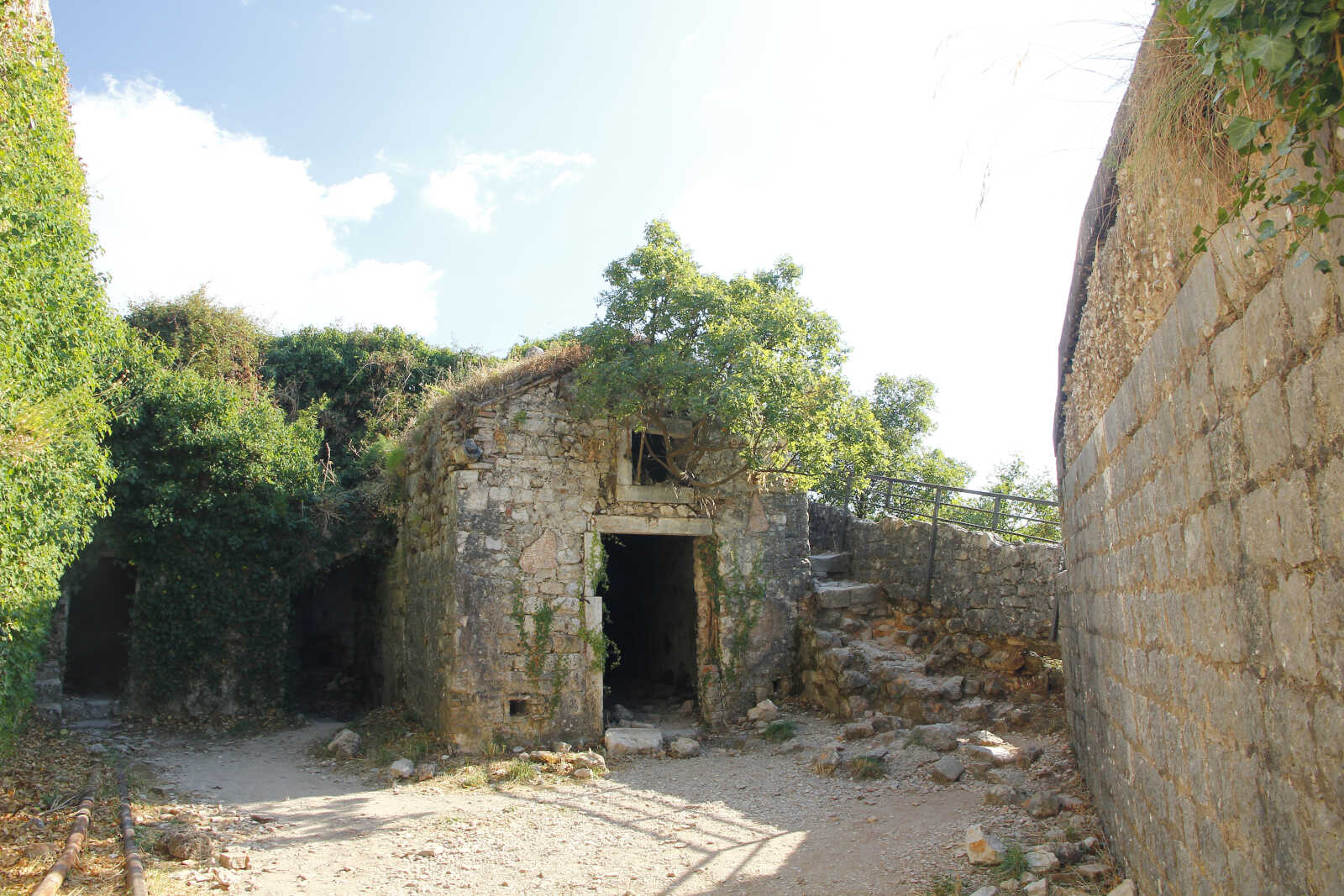
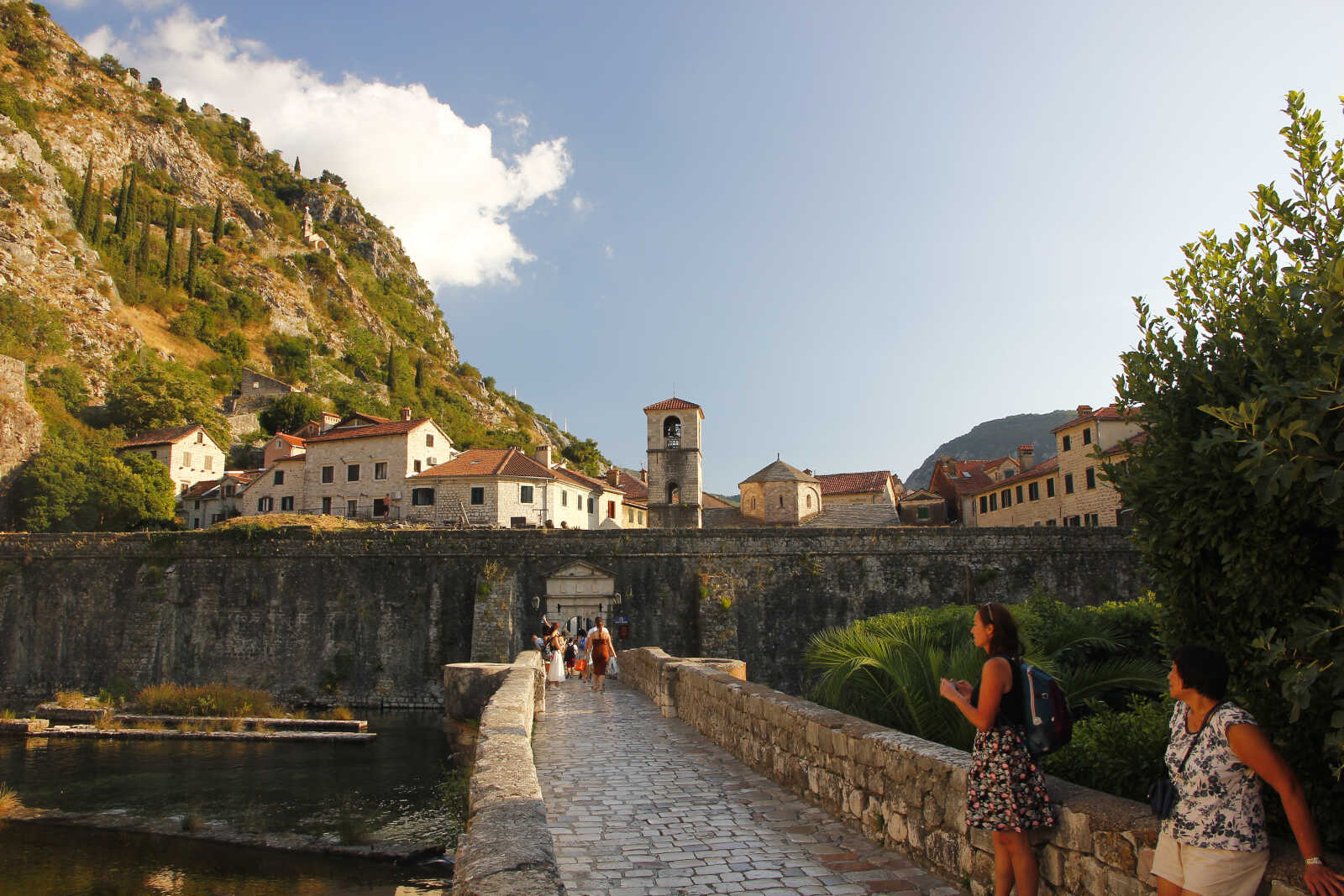
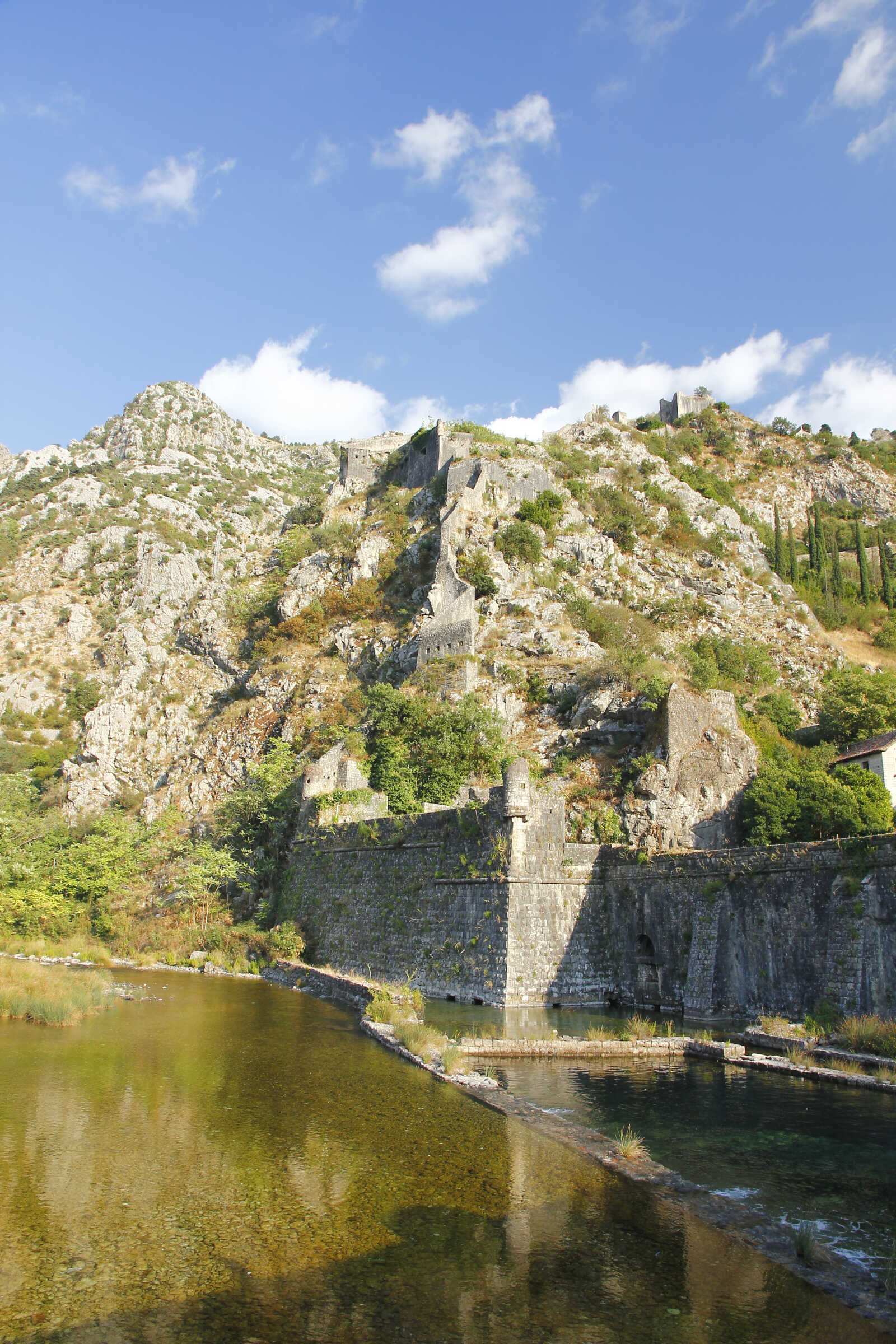
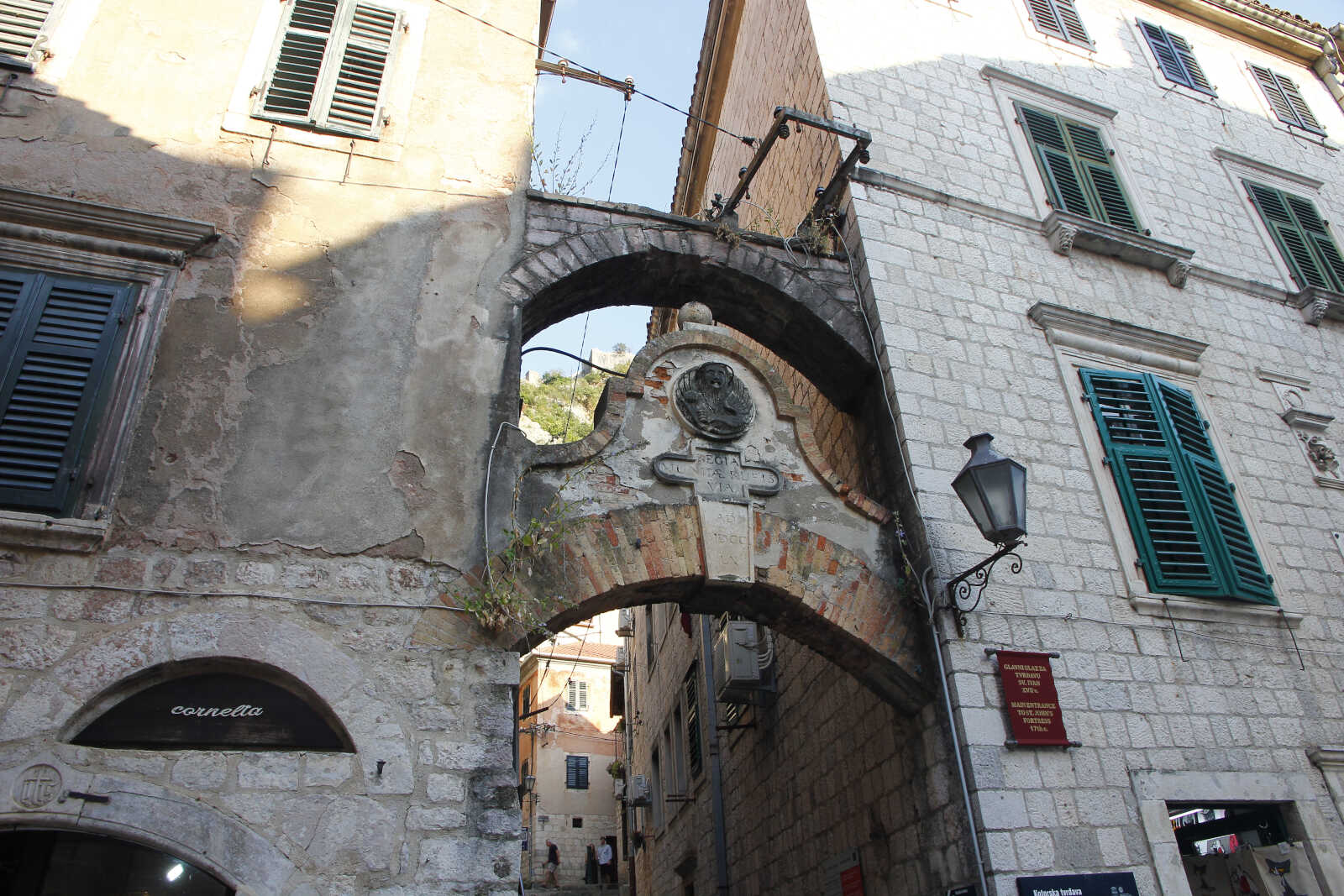
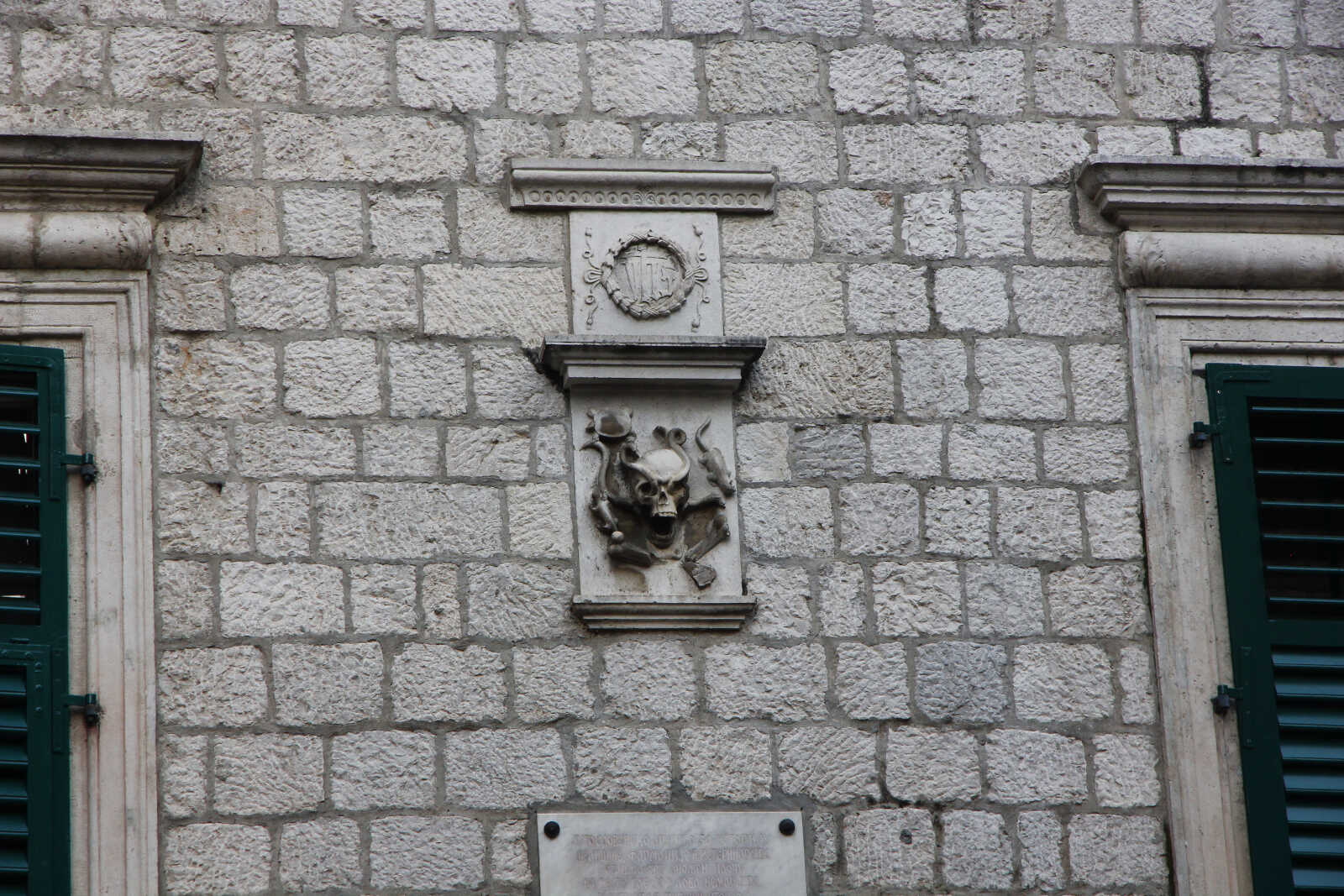
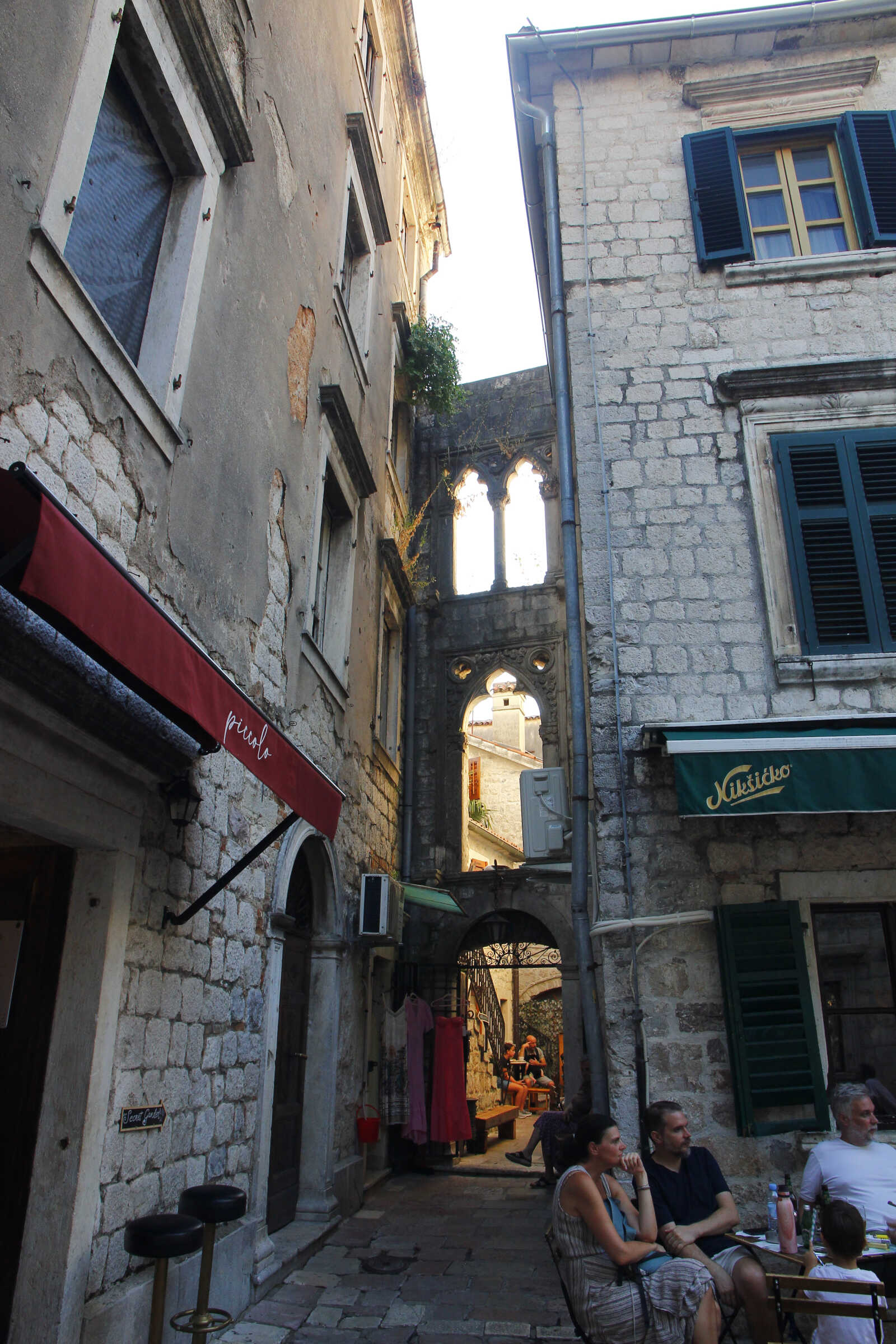
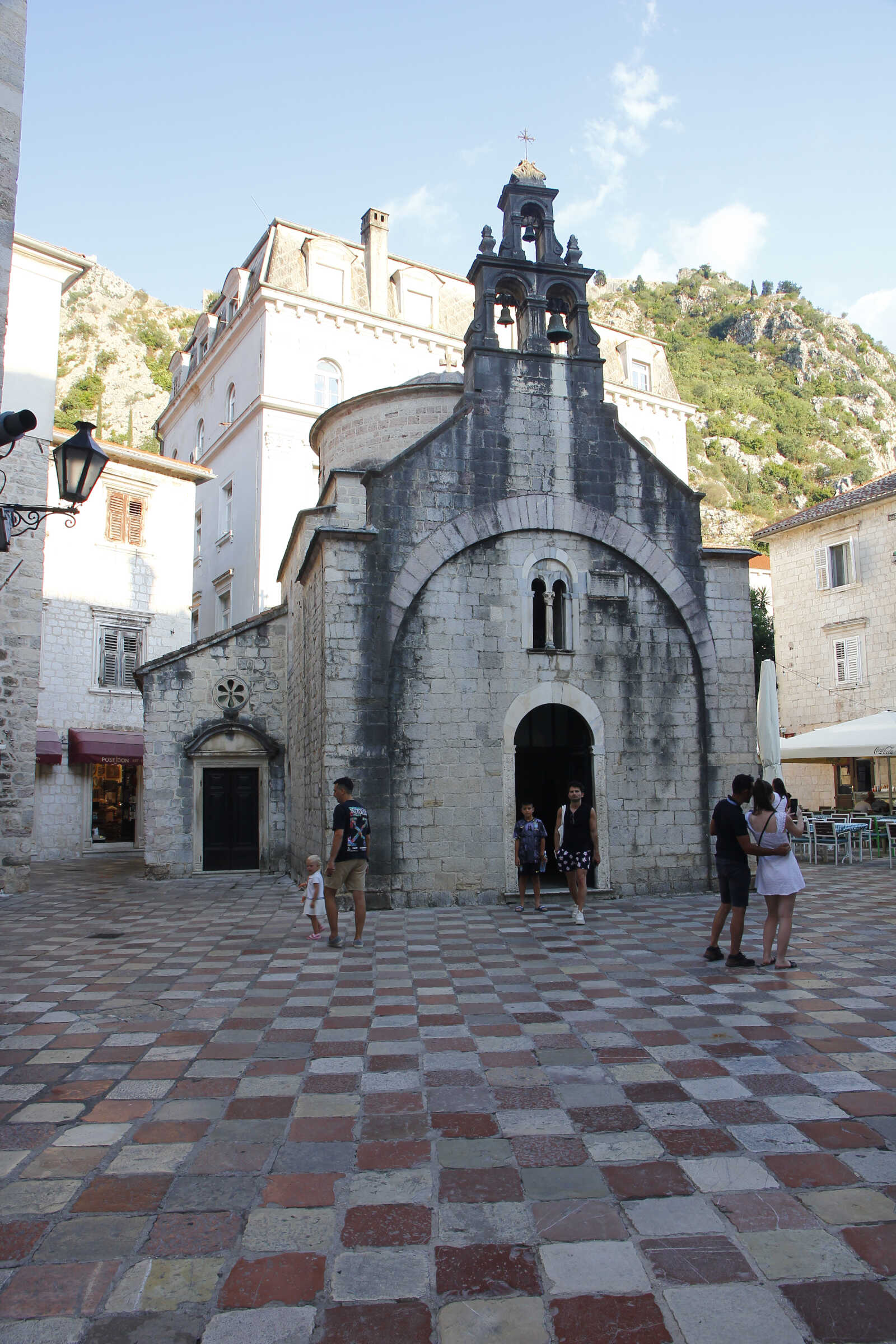
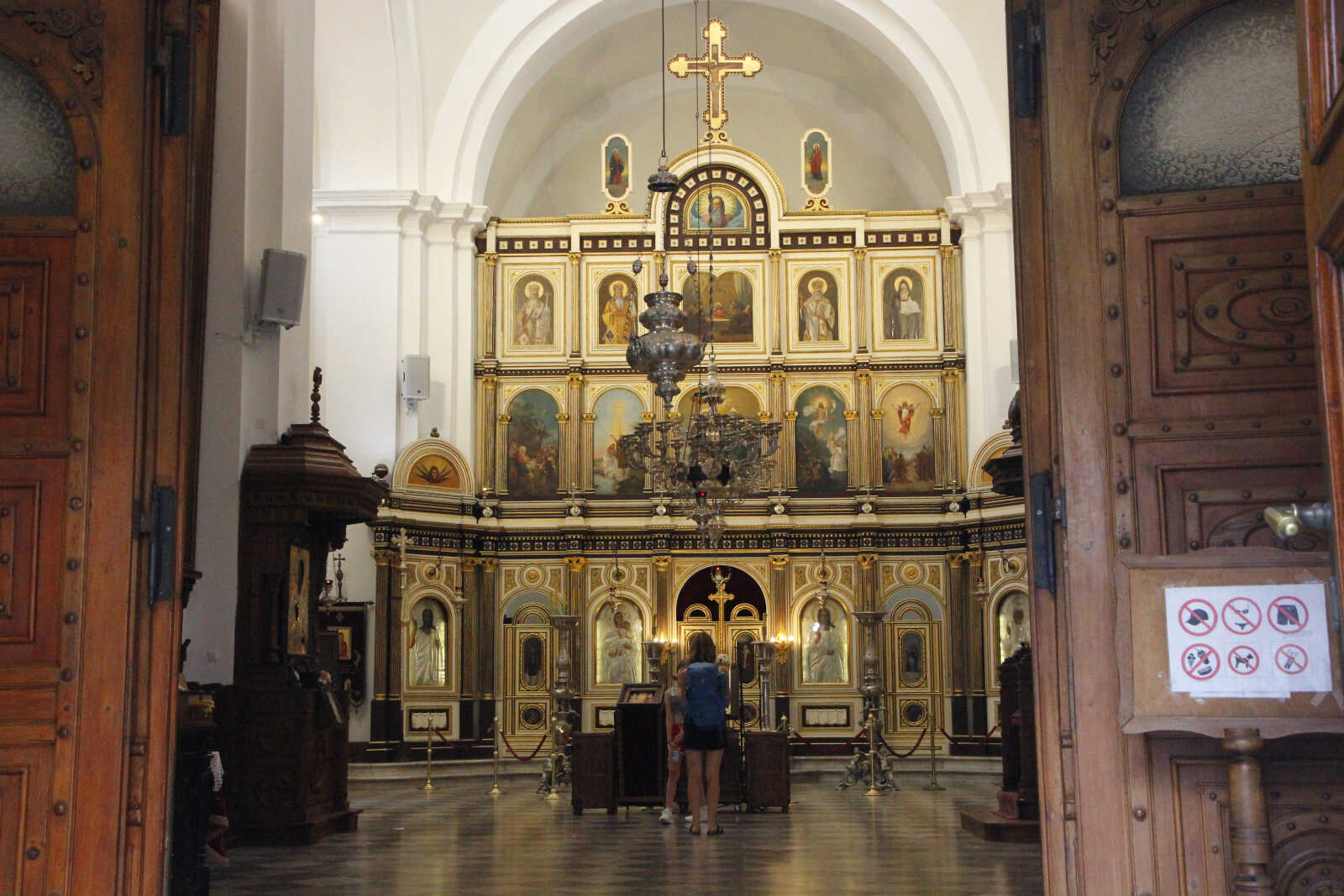
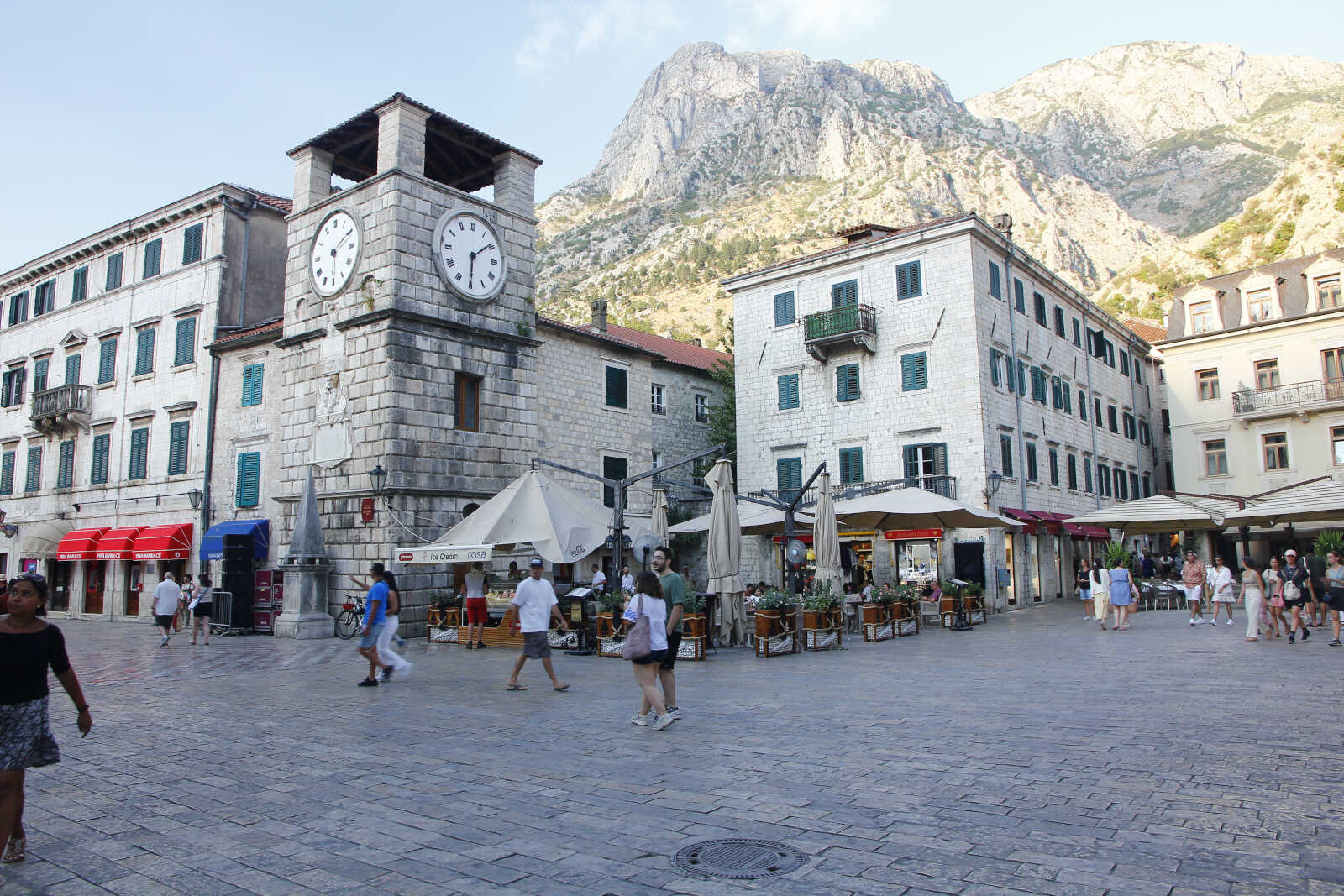
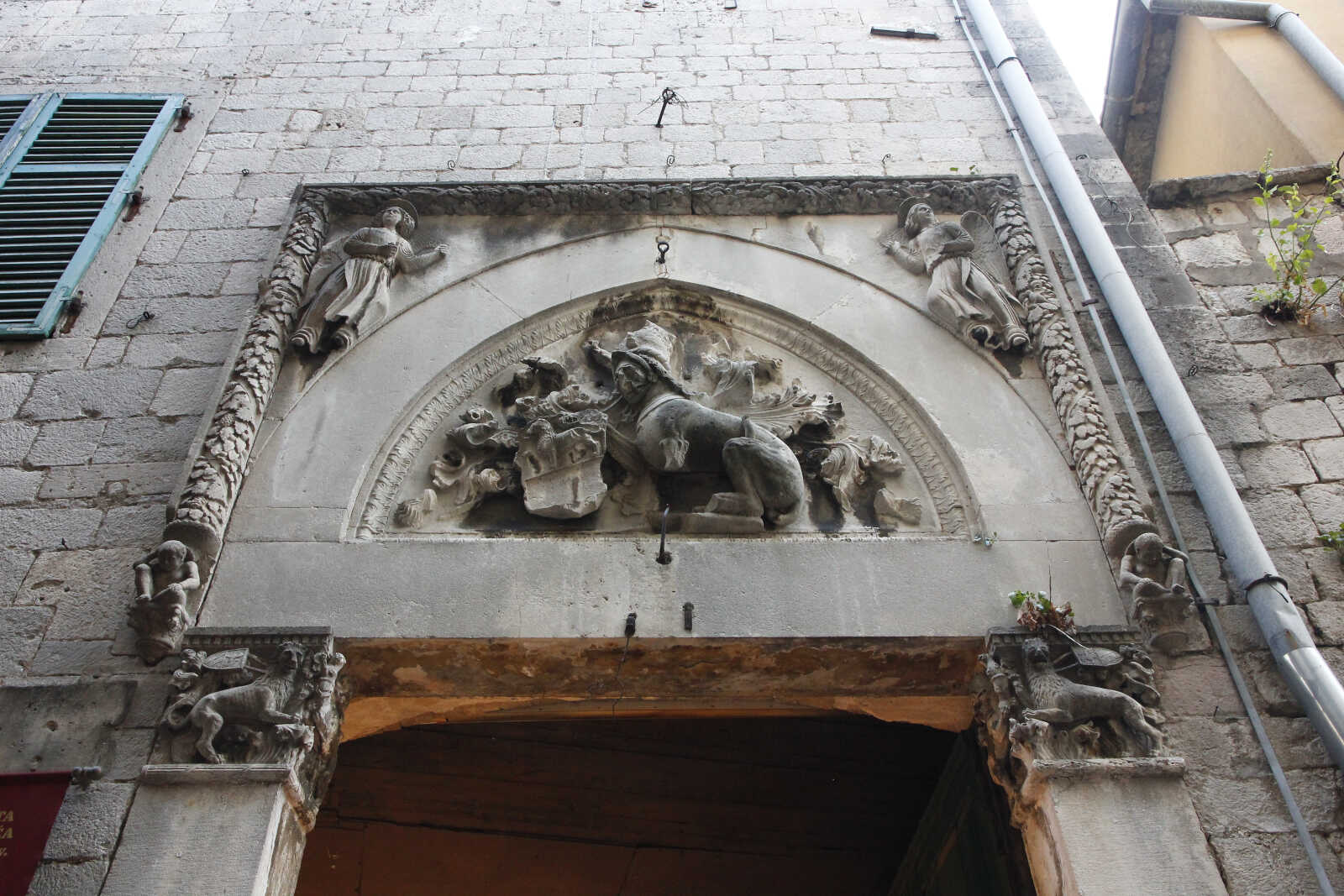
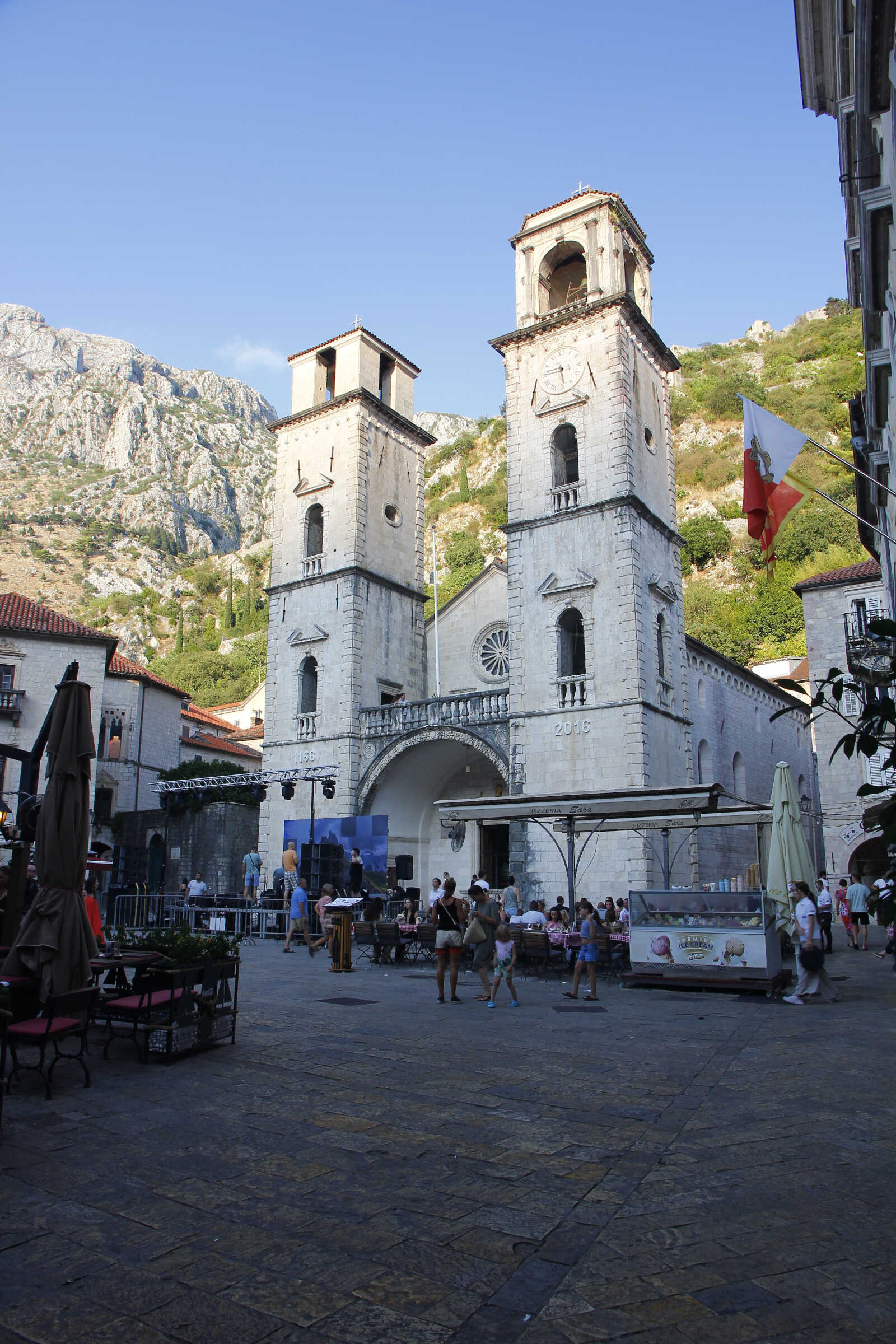
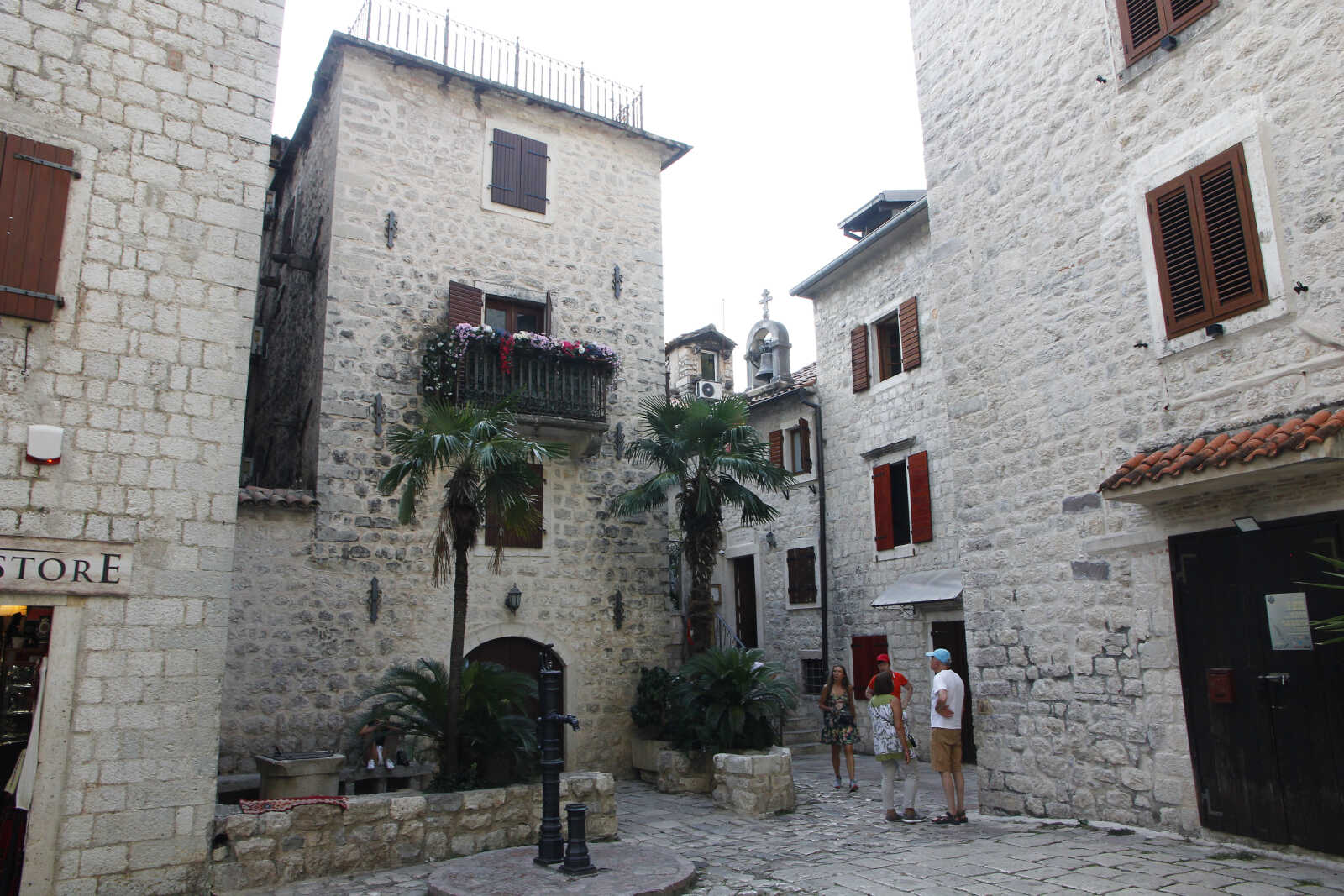
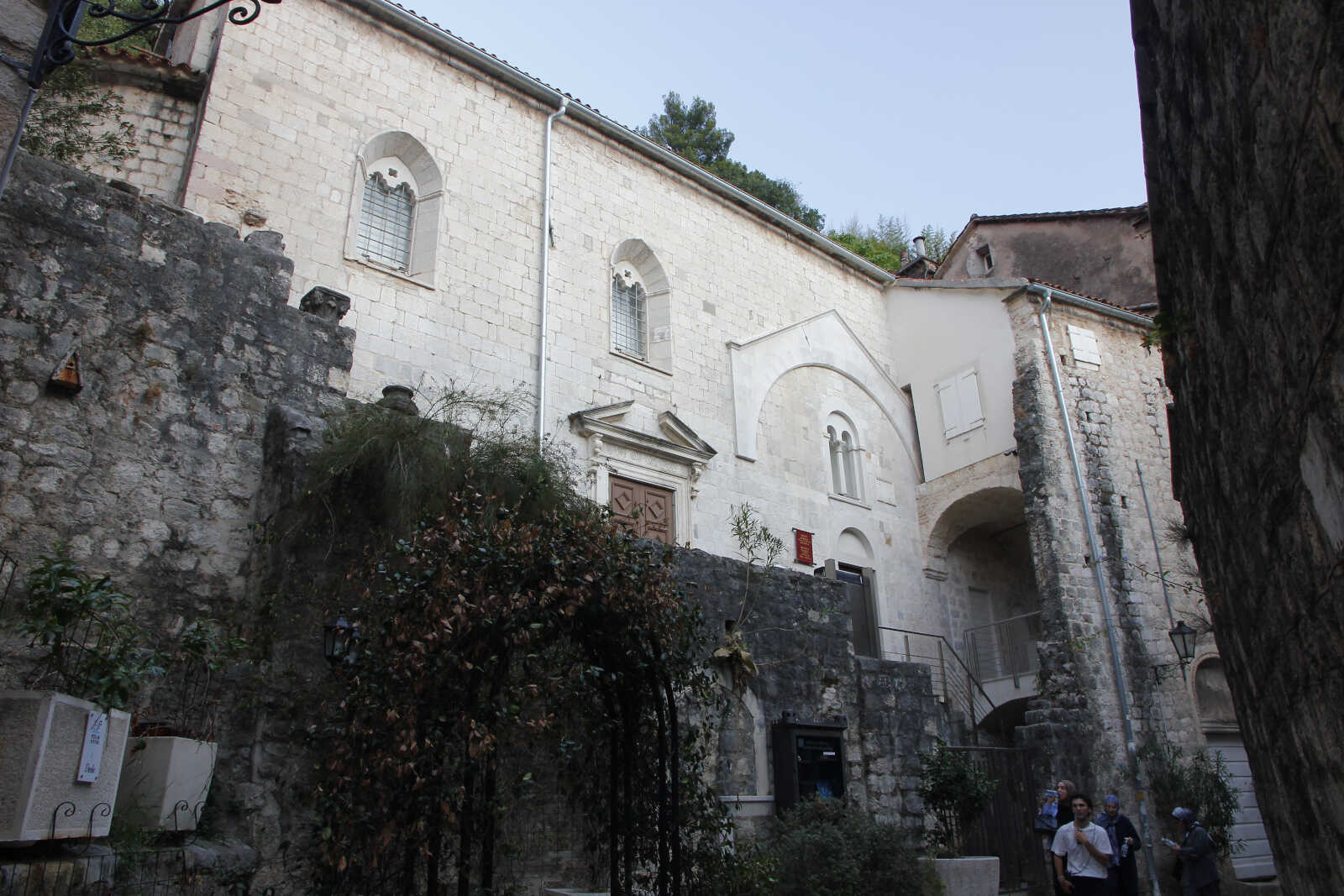
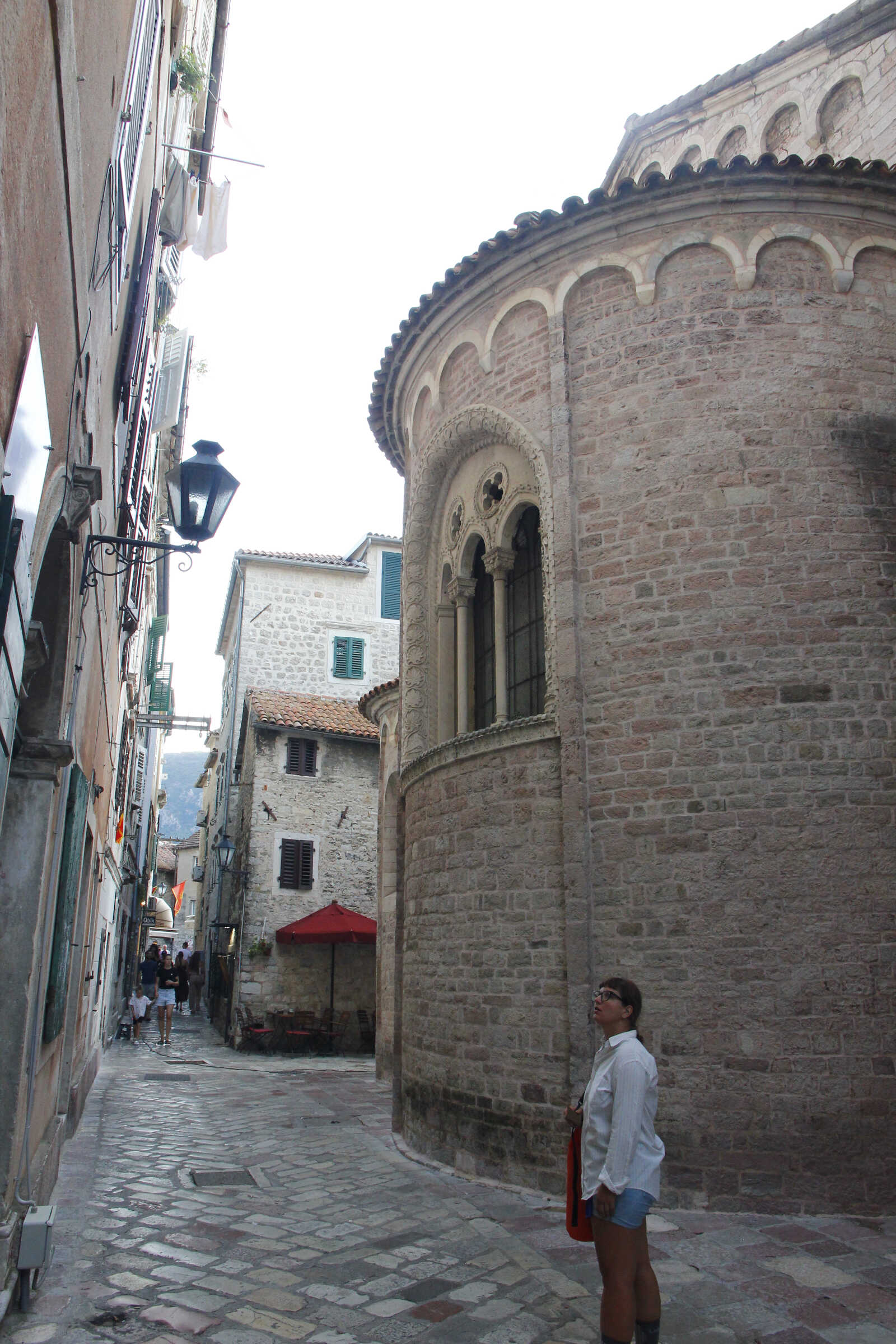
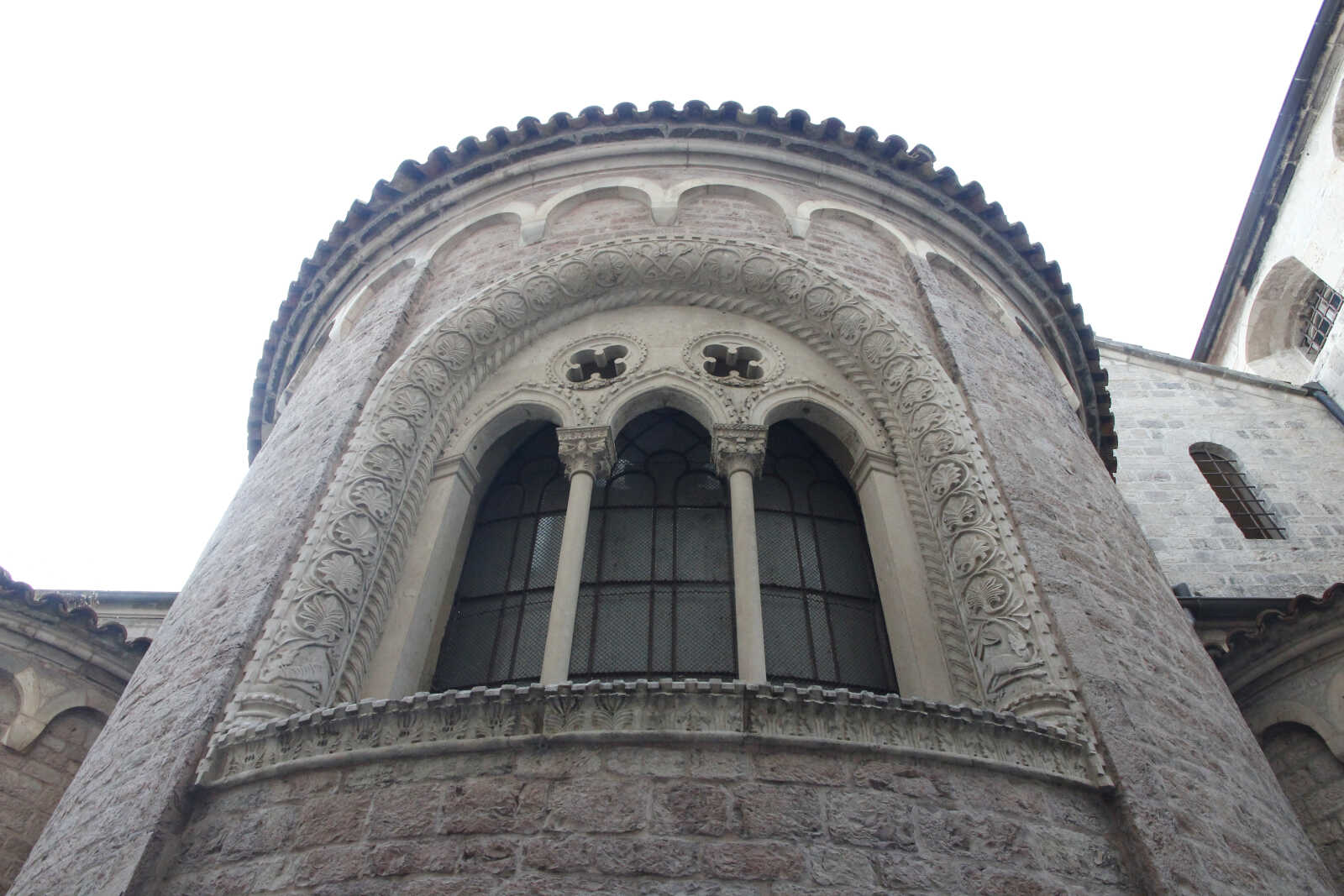
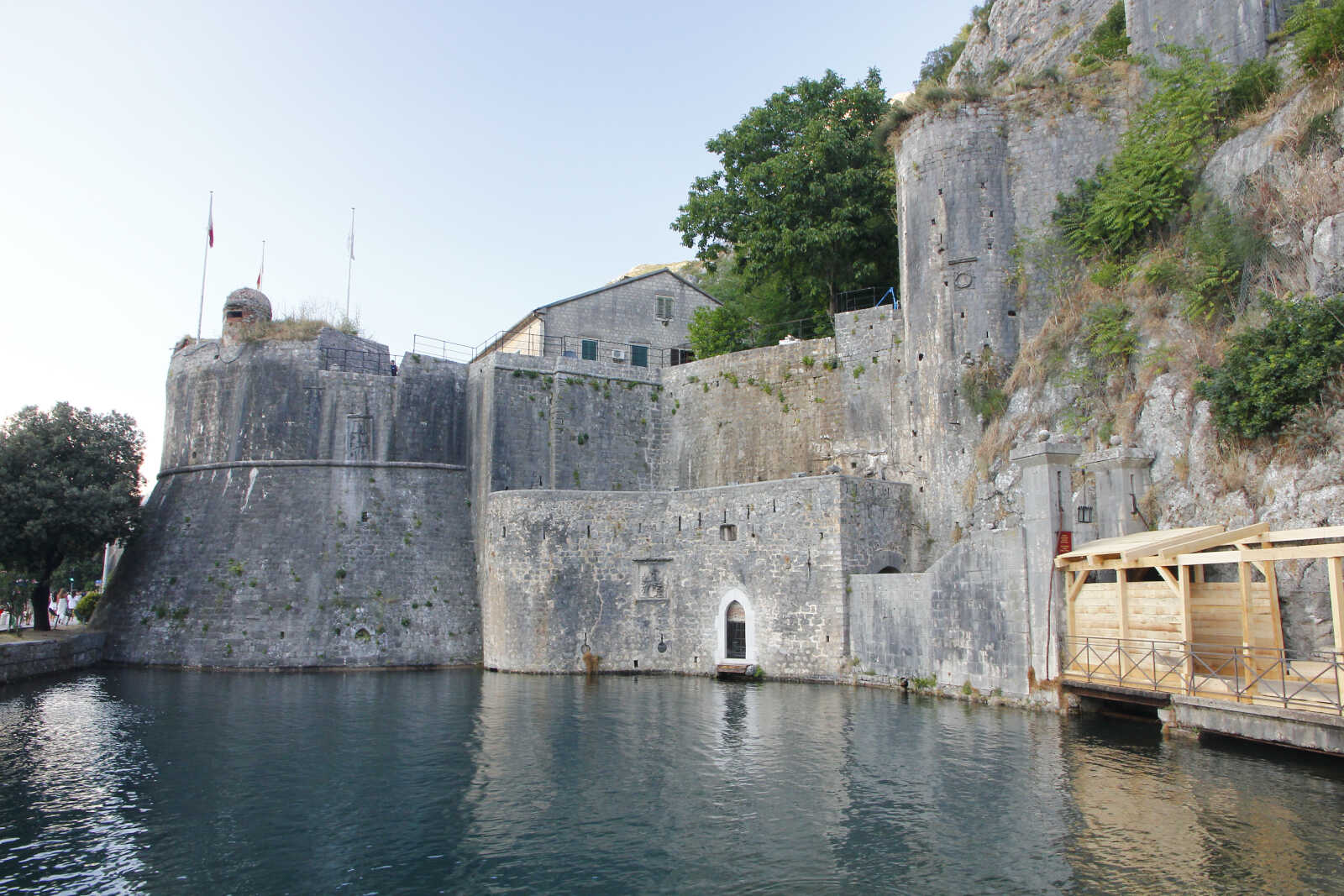
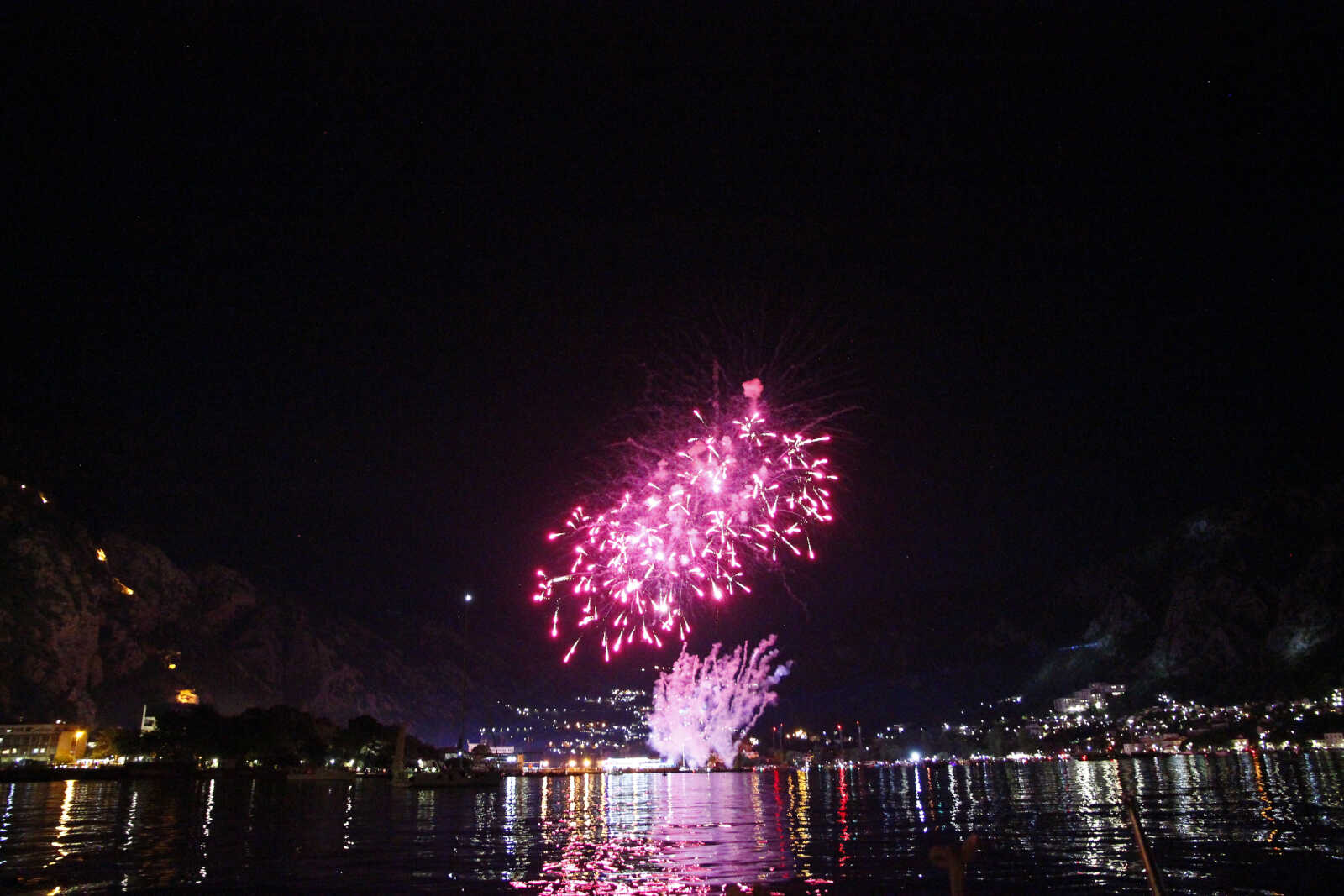
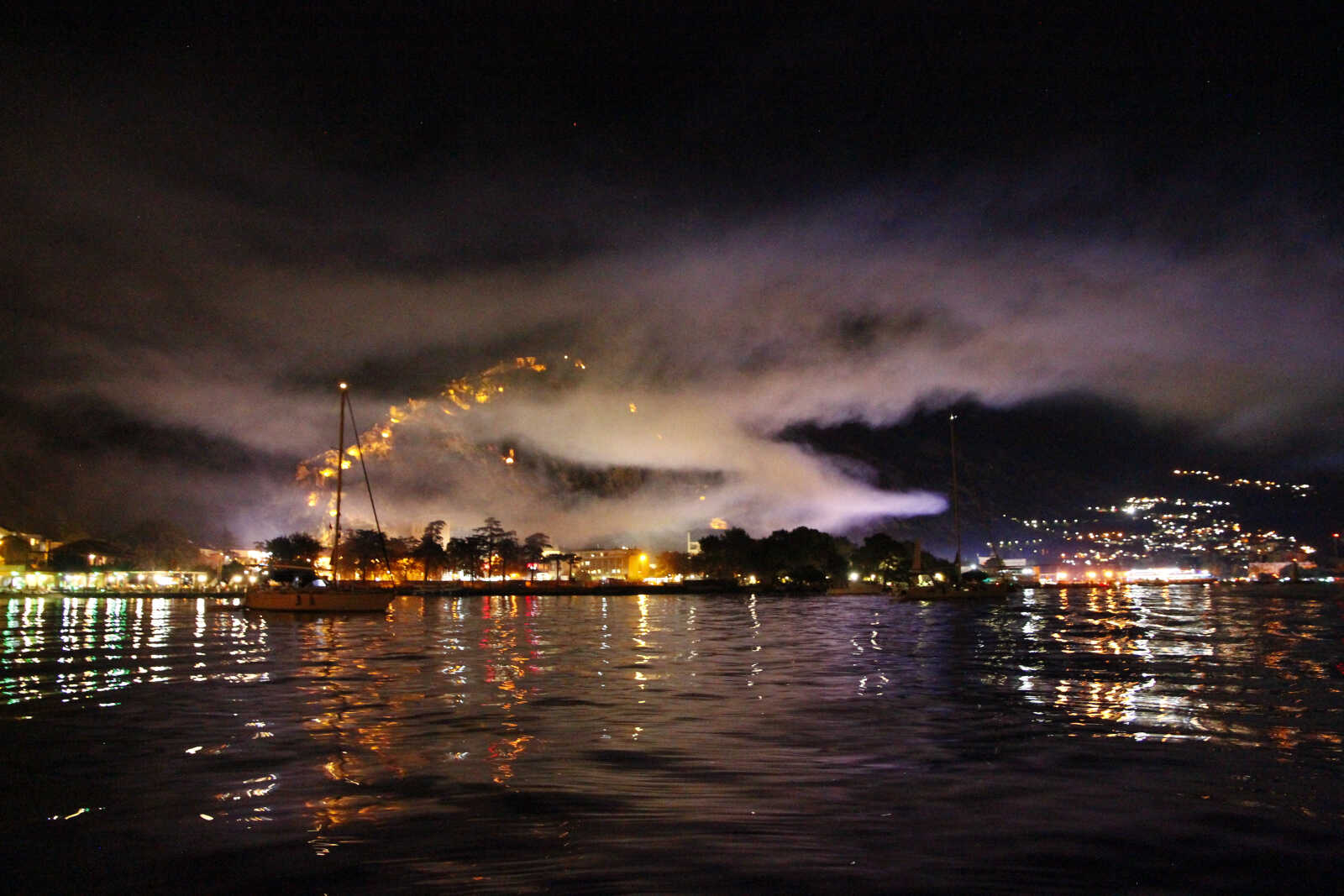
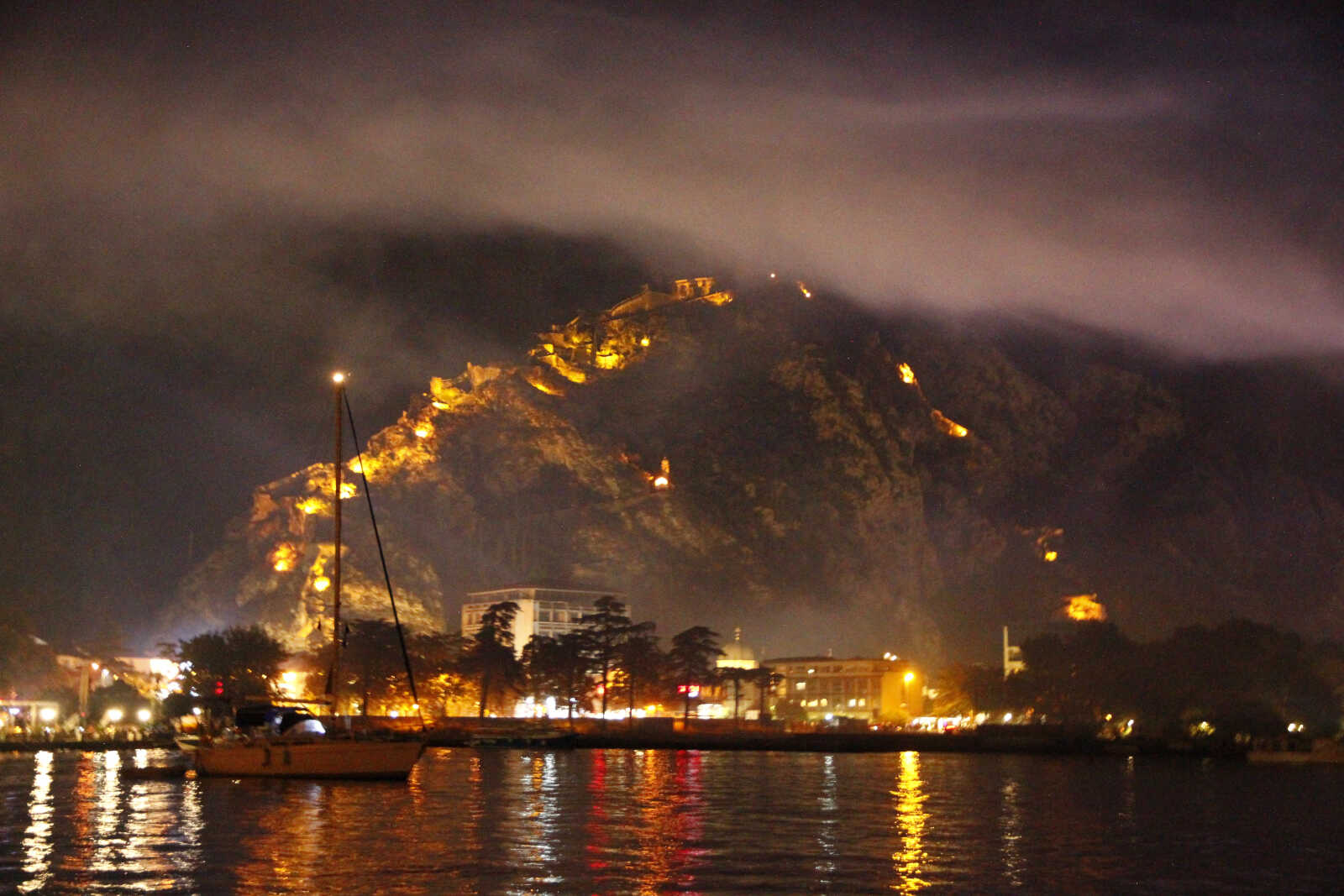
The Bay of Kotor
30 Aug, 2025
The Bay of Kotor, a UNESCO heritage site since 1979, are a series of coves made up of wide valleys connected to each other that fit inland like fjords and whose deep basins perfectly sheltered from the open sea, constitute one of the best natural ports of the Mediterranean Sea.

Map data from OpenStreetMap

The mouth of the strait that connects the two main basins.
After Herceg Novi we decided to go to a quieter corner of the Mouths of Kataros: the islets of Sveti Marko and Ostrvo cvijeća. On Sveti Marko there was from the Sixties to 1991 a tourist village of Club Med now completely abandoned, from the shore the remains of the buildings can be seen just under the thick vegetation, while on the islet in front there is a convent to which access is forbidden.

Ostrvo cvijeća, the Island of Flowers, was instead a tourist village for the military personnel of socialist Yugoslavia, and has been home to an Orthodox Monastery dedicated to Saint Michael the Archangel since the 13th century. Attached to the island there is also a small port and a pier run by Marko. We had a chat while he kindly had us fill our water jerry cans for free.

On the other side of these two quiet islets is the town of Tivat, the most densely populated municipality in the region and animated by the many bars and shops along the seaside and "Porto Montenegro" which was a naval base of the former Yugoslavia in total abandonment until 2007, when it was purchased by the Canadian billionaire Peter Munk to make it a luxury marina with attached hotels and shops and today it is a base for super yachts and many (large) pleasure boats with non-European flags in a strategic point of the Mediterranean.

In the foreground is a J-Class sailboat of about 25 m, one of the 9 currently in existence since the first launch in the 1930s to compete in the America's Cup regatta and the distinctive three rotating andself-supporting masts of the famous Maltese Falcon, the 88 m extra-luxury sailing yacht that for its rigging is also considered a unique engineering work in the world.


Two submarines of the Yugoslav fleet on display behind the Tivat Naval Museum, one has been underwater continuously for 276 days!
The Gulf of Risan is another enchanting corner made up of small holiday villages and a pearl of Venetian architecture: Perast.












We have also found unexpected rock engravings, evidence of the presence of man in the area since the Bronze Age, which can be reached by taking a path of a couple of km immersed in vegetation near the village of Lipci.




We could not help but taste the famous mussels and oysters in one of the farms that we reached with the tender a few meters from the boat for a simple but tasty lunch.

The most important center of the area is the city of Kotor from which the Bay take their name. It is a fortified Venetian city, where many Italians lived until the 1950s and is still the headquarters of the Italian Community of Montenegro. Walking through the streets, you realize that it a well-known tourist destination, but it seems there are still places and cultural centers for the people who live there and between a Lion of Venice and a drinkable water fountain, there are also pubs and Orthodox churches.
The city's fortification system took on its current appearance thanks to the work of the Venetians in the fifteenth century after Kotor begged for 25 years to become part of the domains of the Serenissima for fear of the Ottoman advance. Apparently in the Venetian dialect there is still the saying "Te me xi pì cara dee mura de Cataro!" (You are more expensive than the Walls of Kotor!) for a very demanding woman.
We climbed to the fortress not walking on the walls, but along the "Kotor's Staircase" path that also passes through an abandoned village and gives breathtaking views of Mount Lovćen and the bay below.
We made our visit to the city coincide with the evening of the "Bokeljska Noc" event, in which every year, on the third Saturday of August, the maritime identity of Kotor is celebrated with the parade of the local sailing club and the parade of dozens of small boats illuminated and decorated (the event is considered a second Carnival). The whole thing ends with a fireworks display, which we risked seeing from too close since, without knowing it, in the afternoon we were anchored in the perimeter from which they were shot :)





























